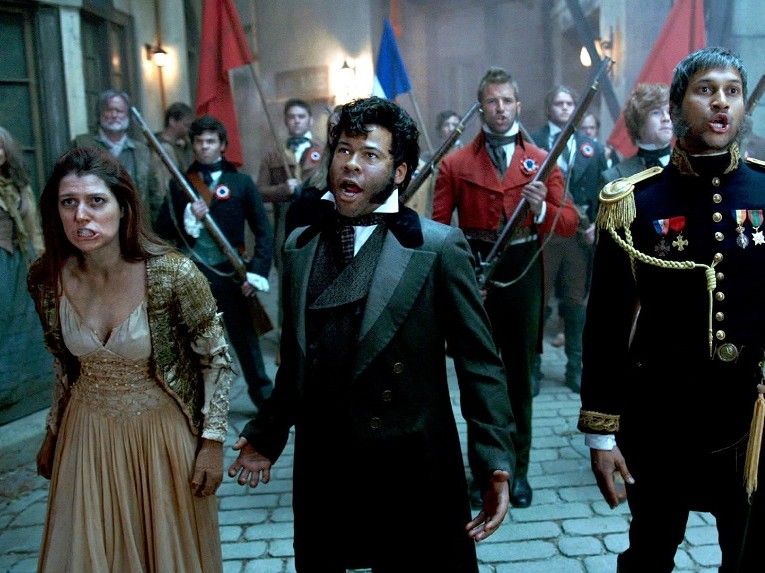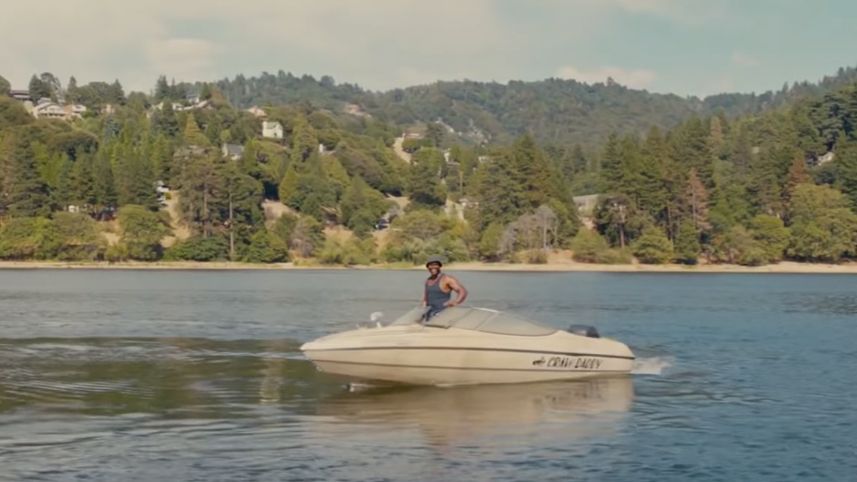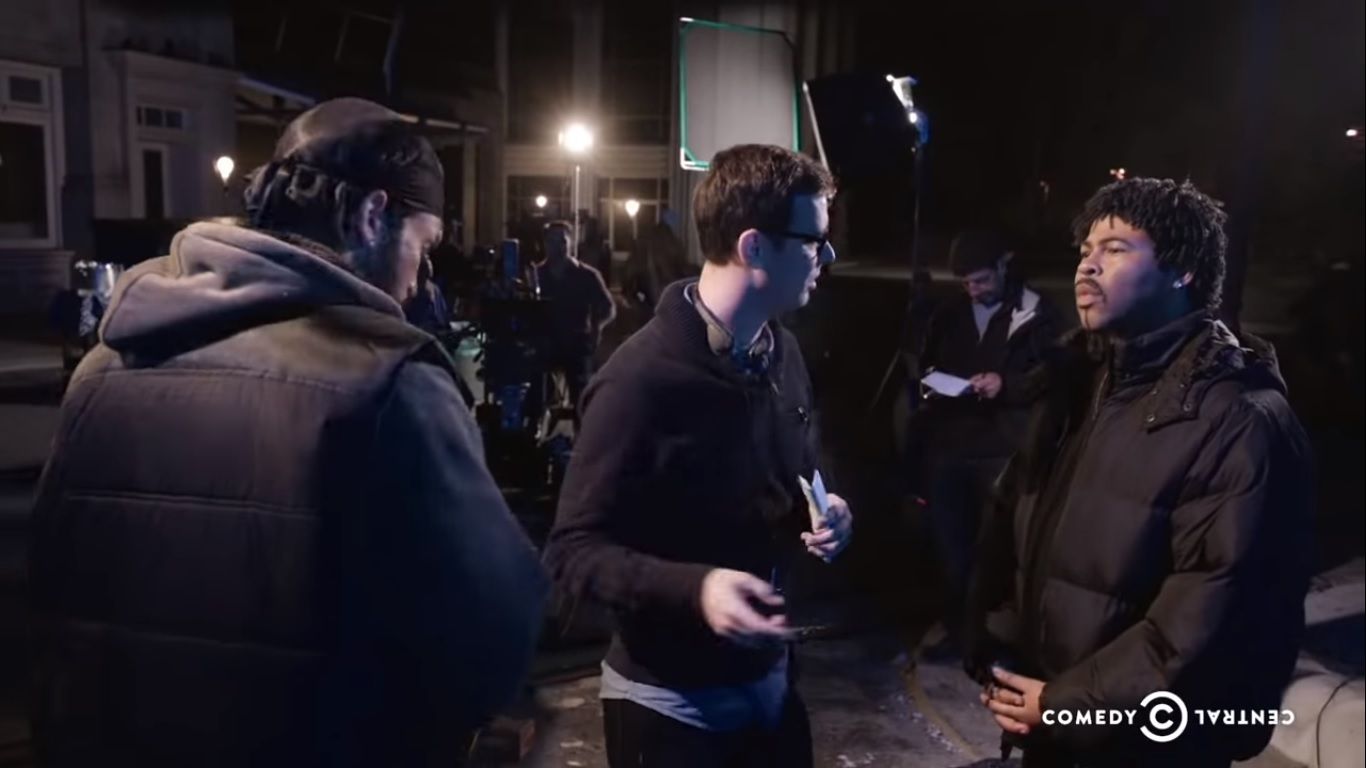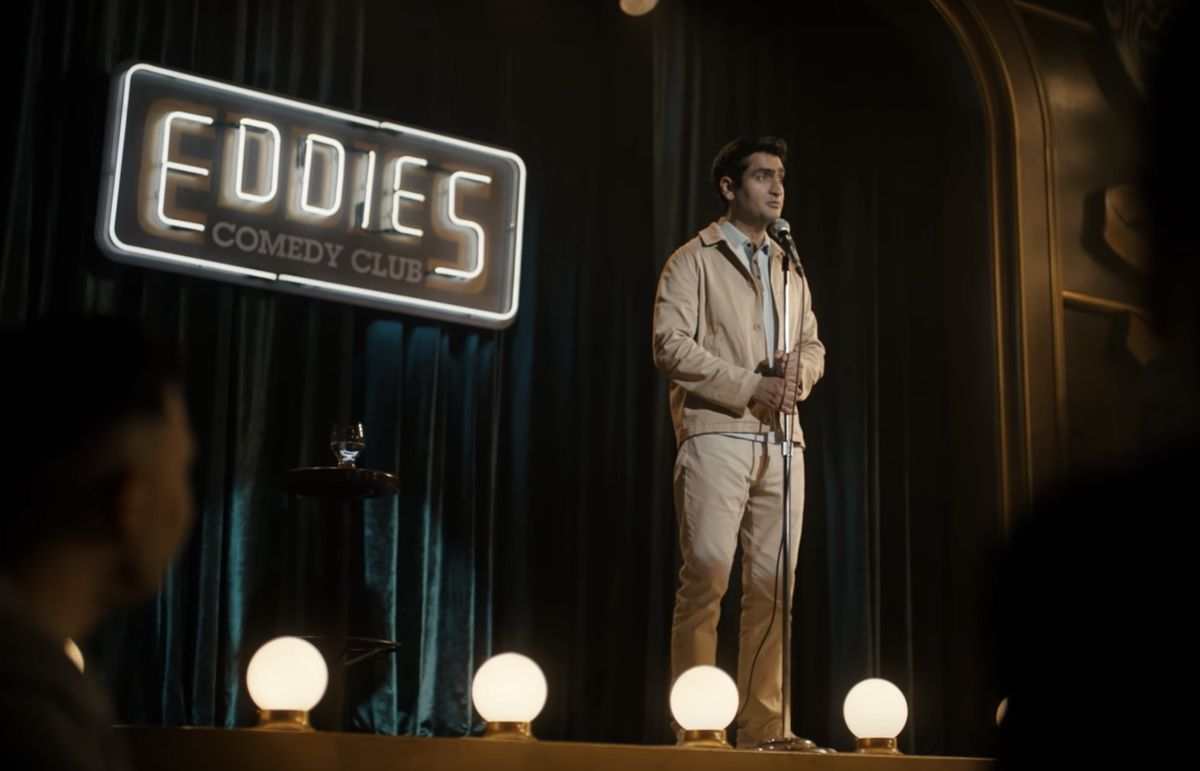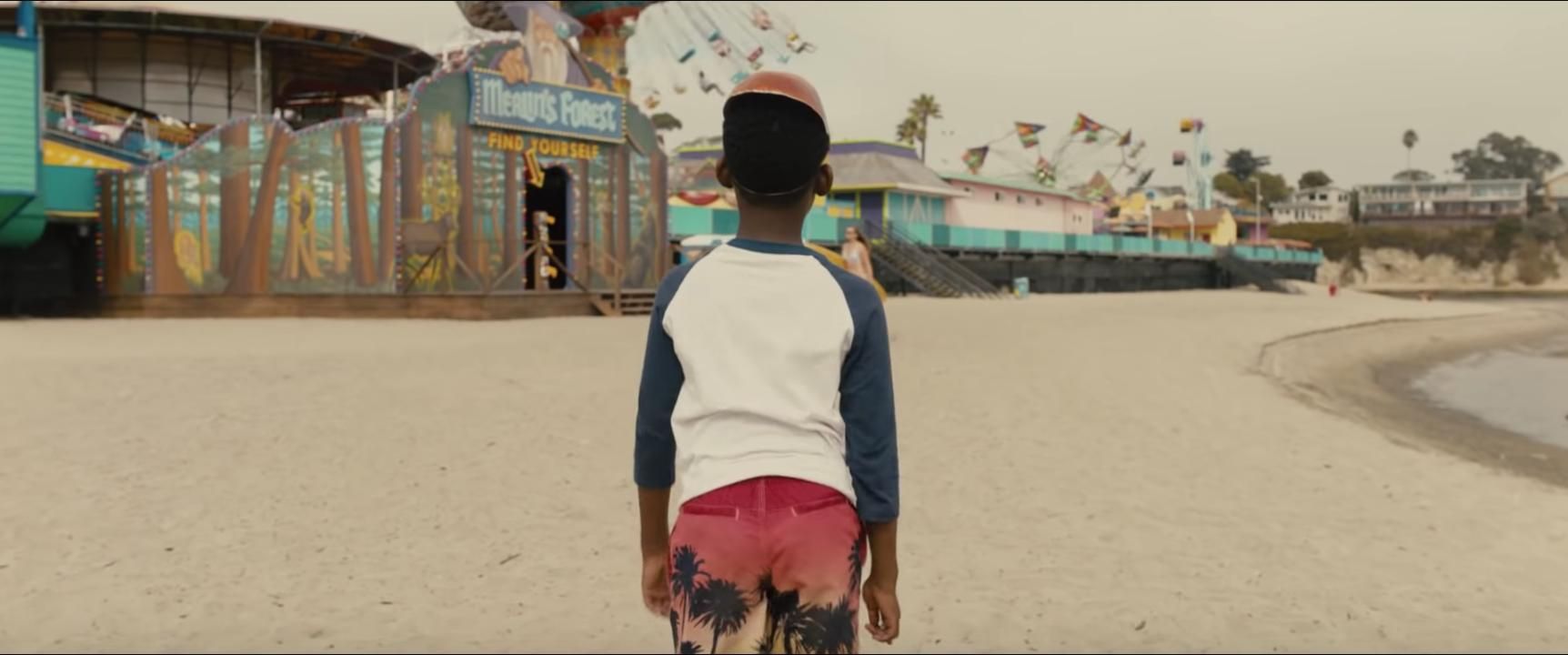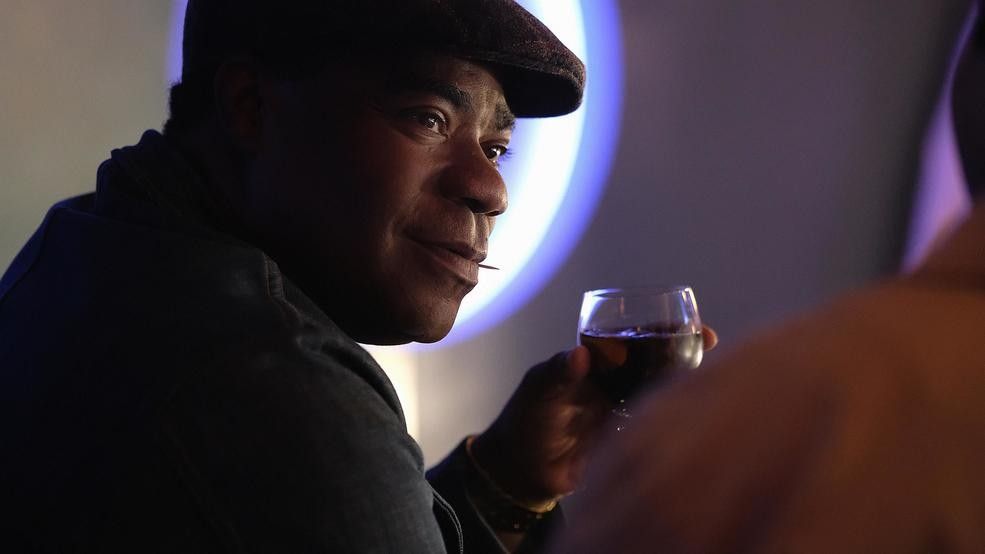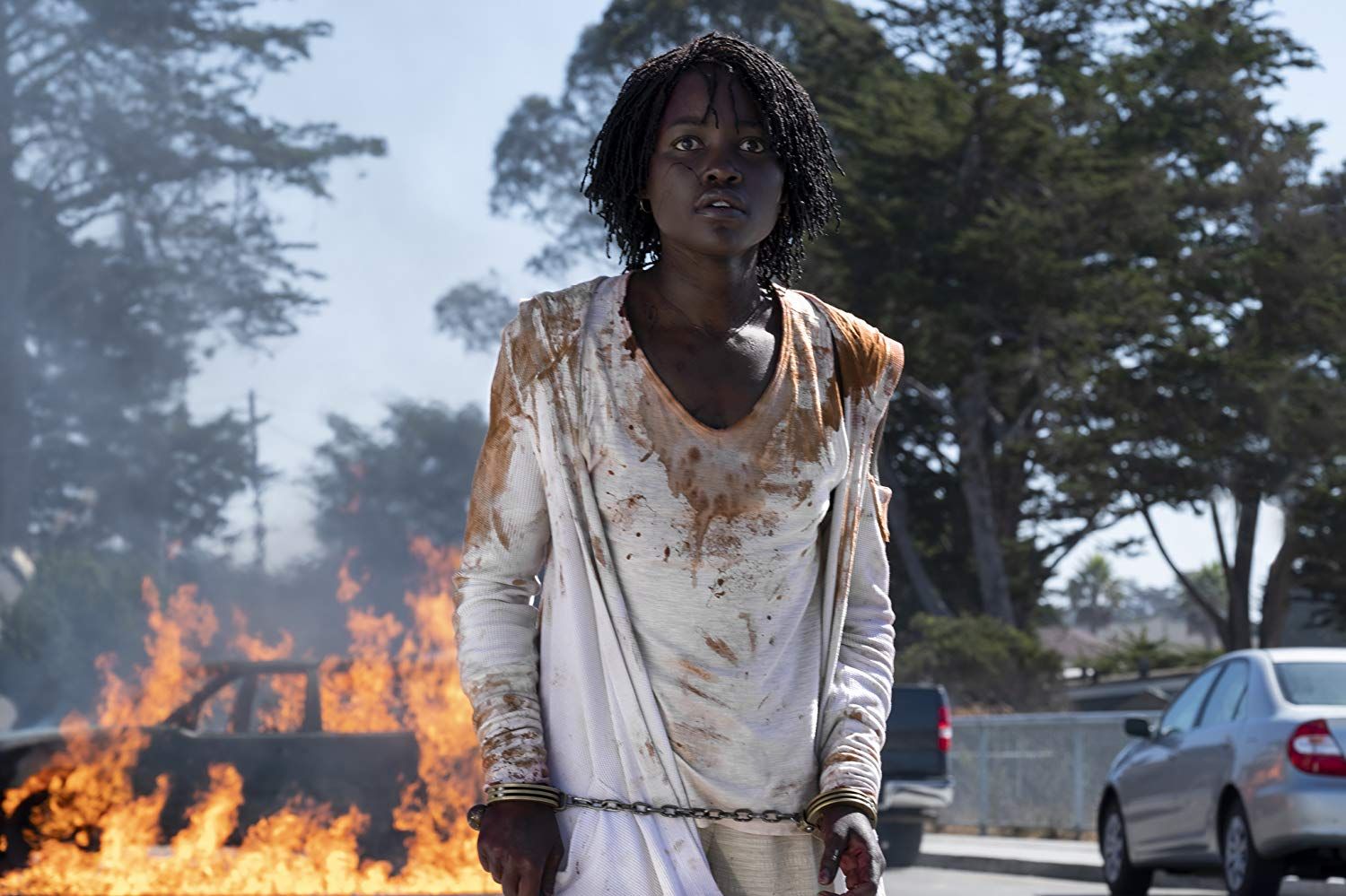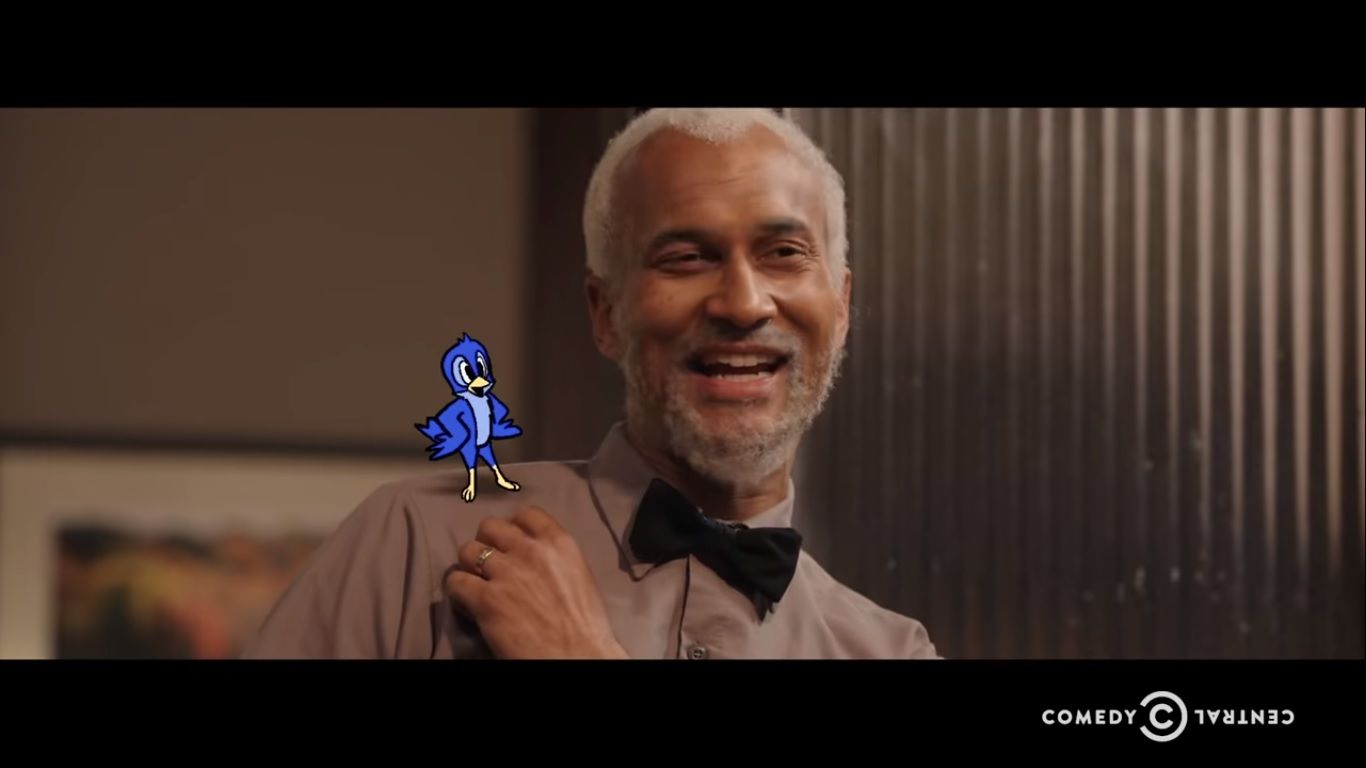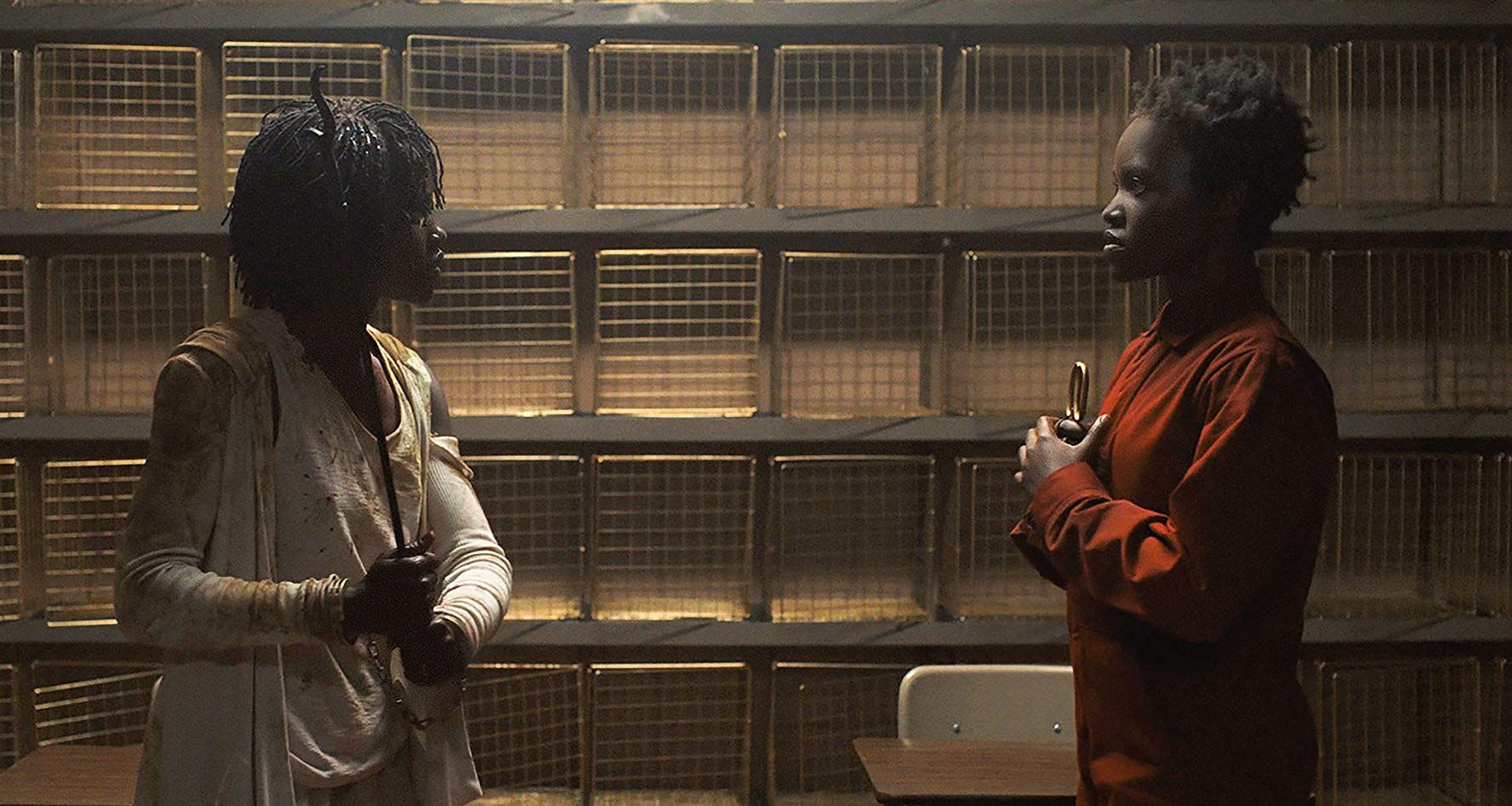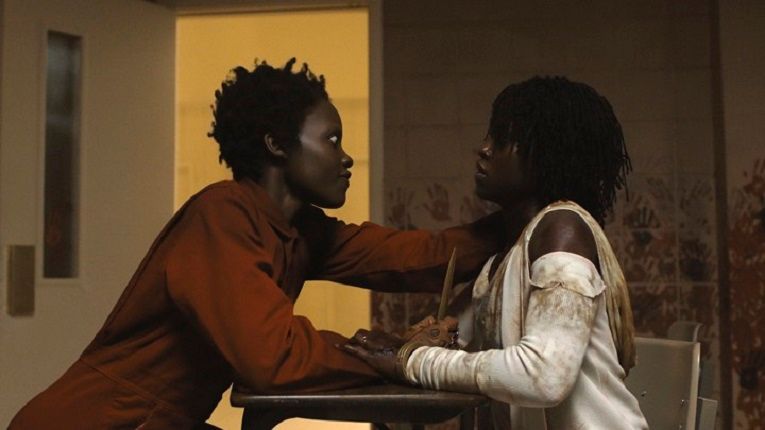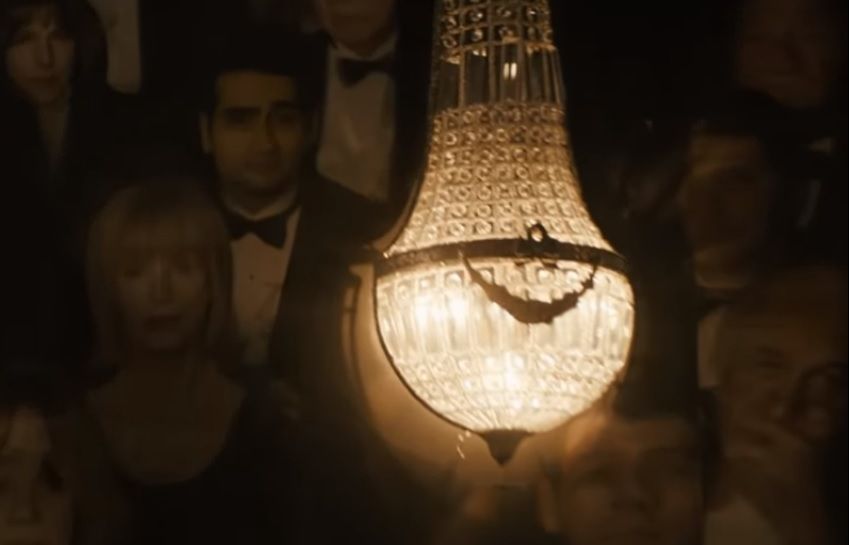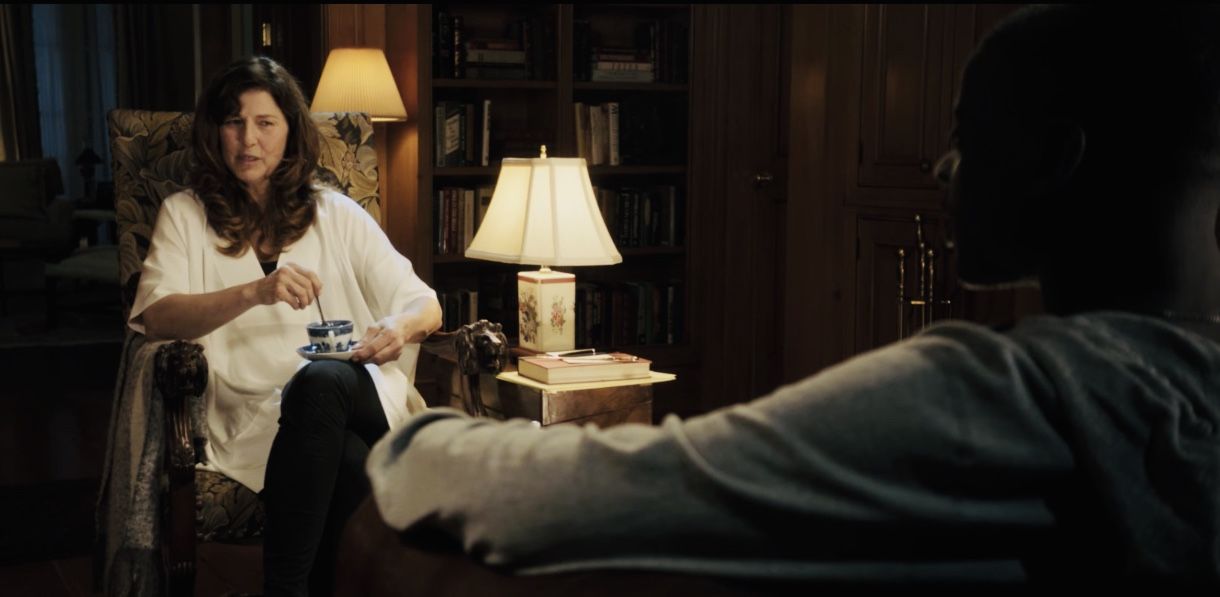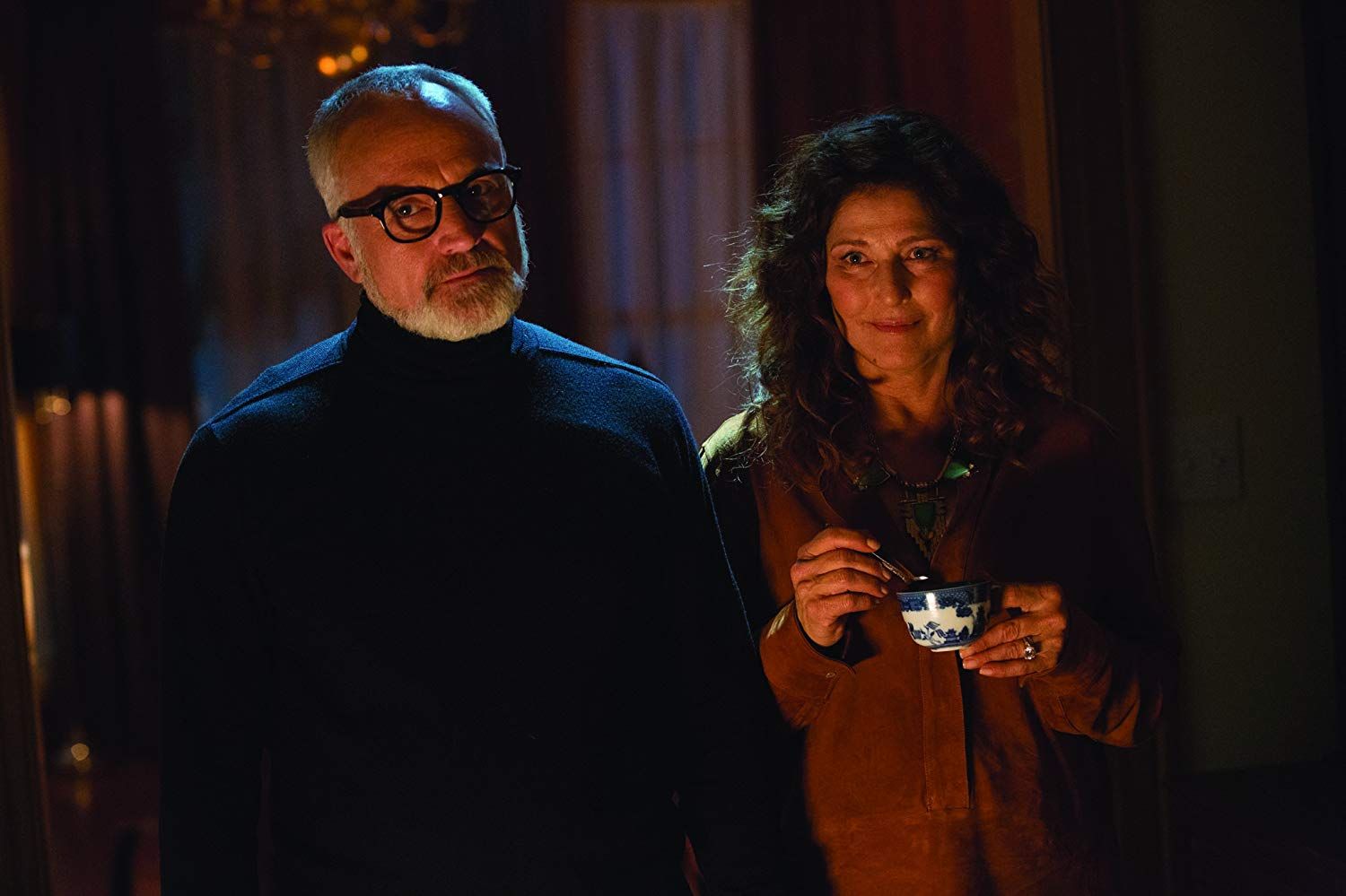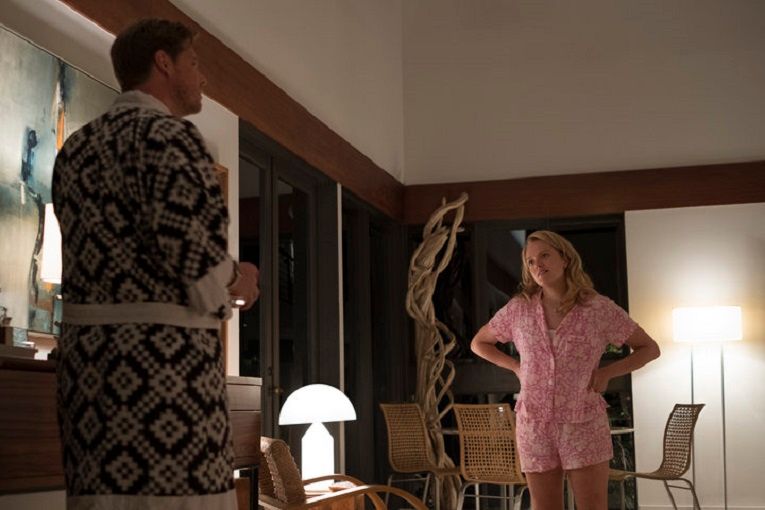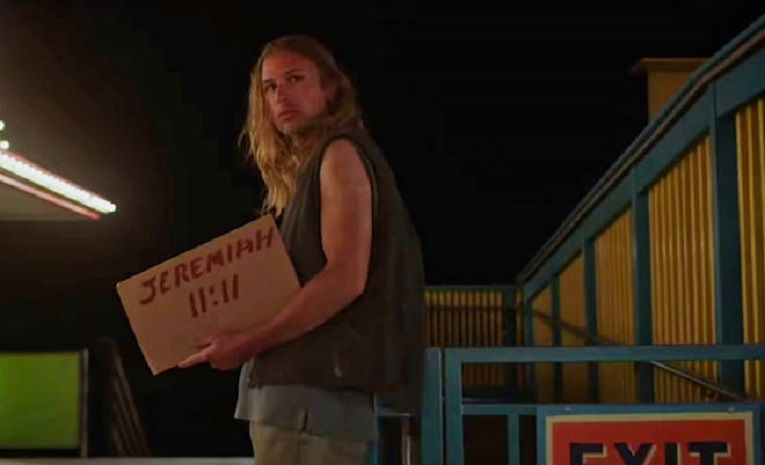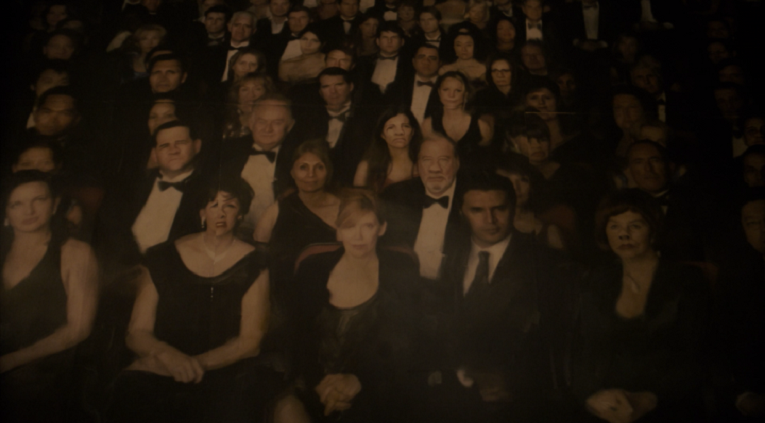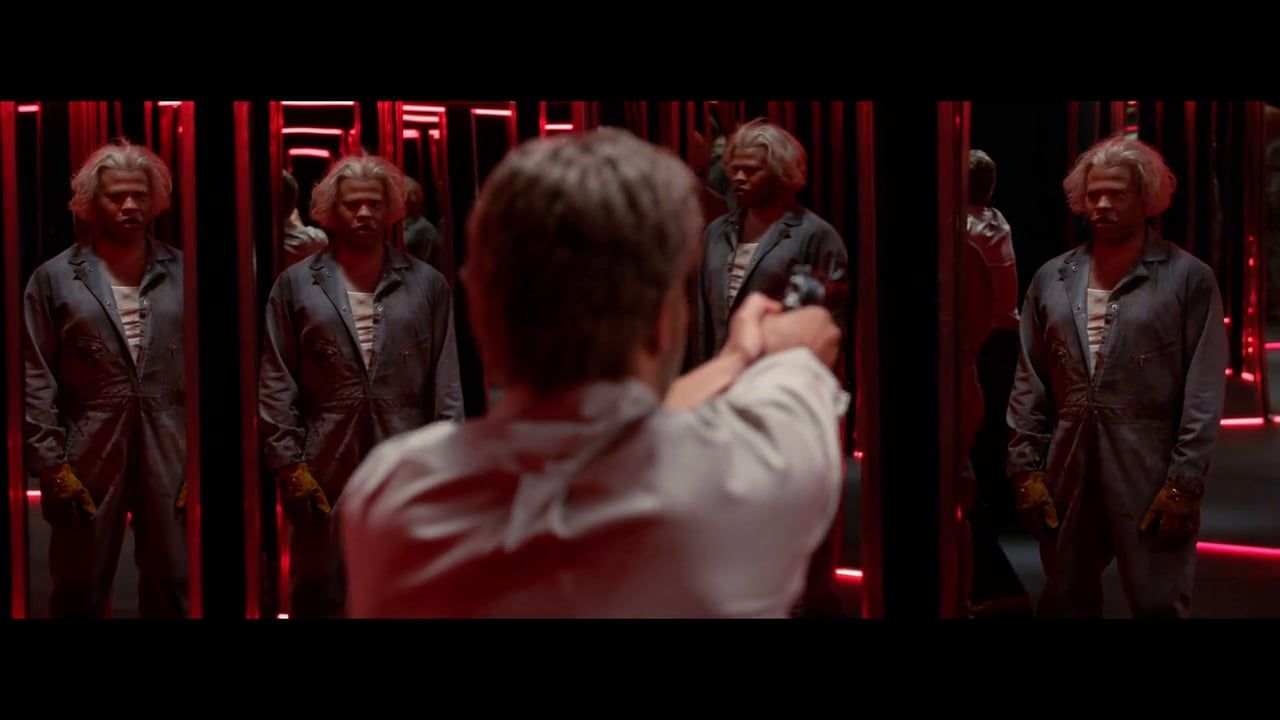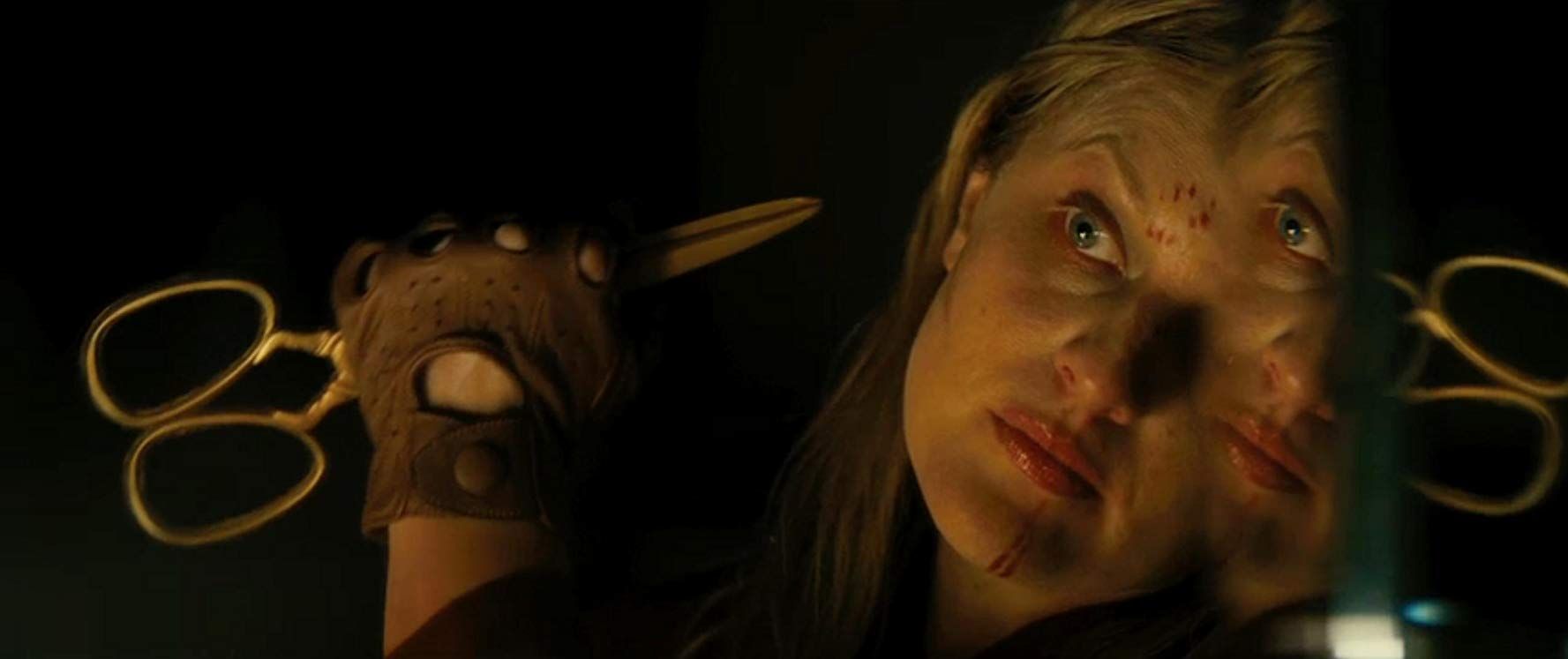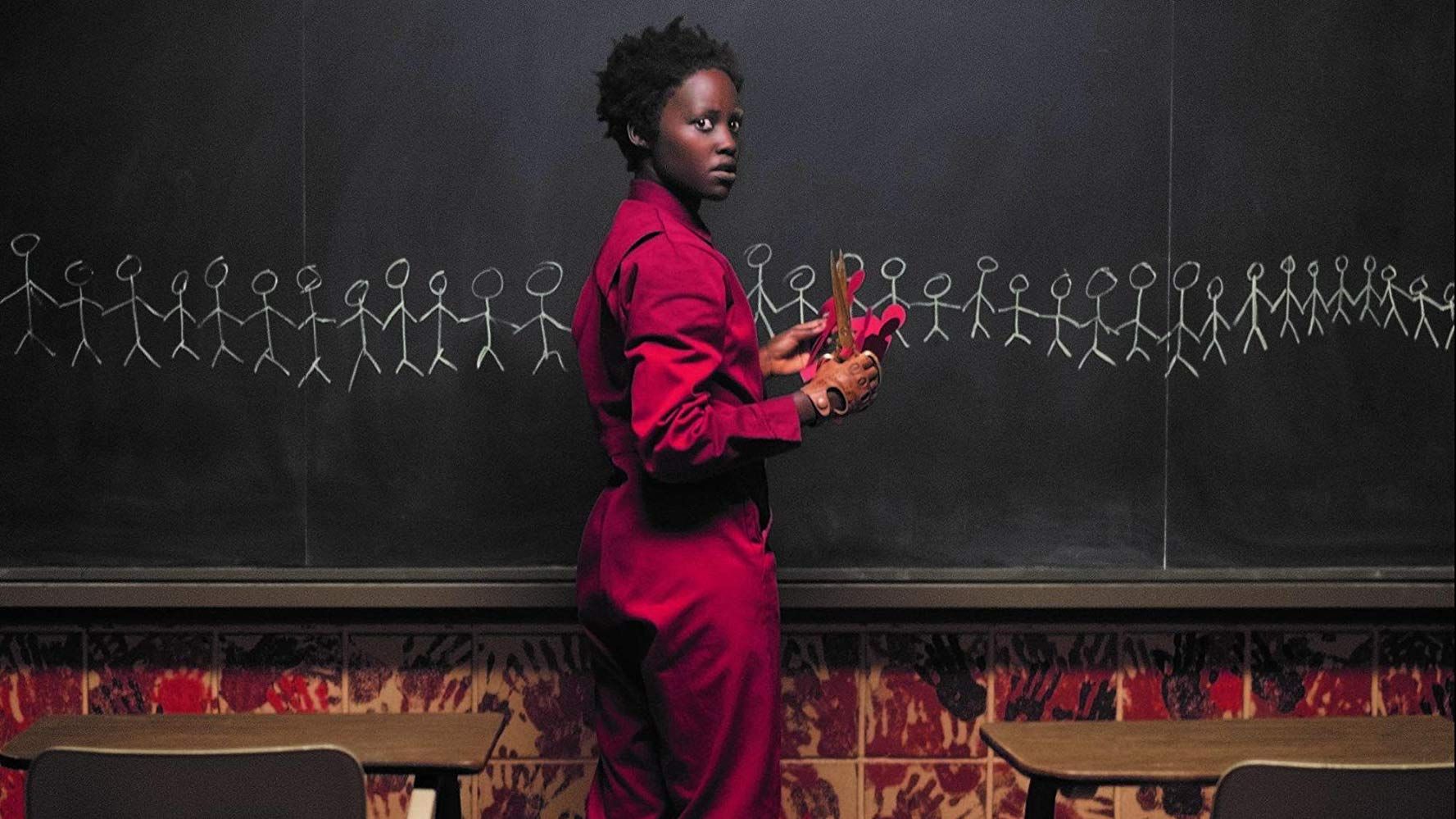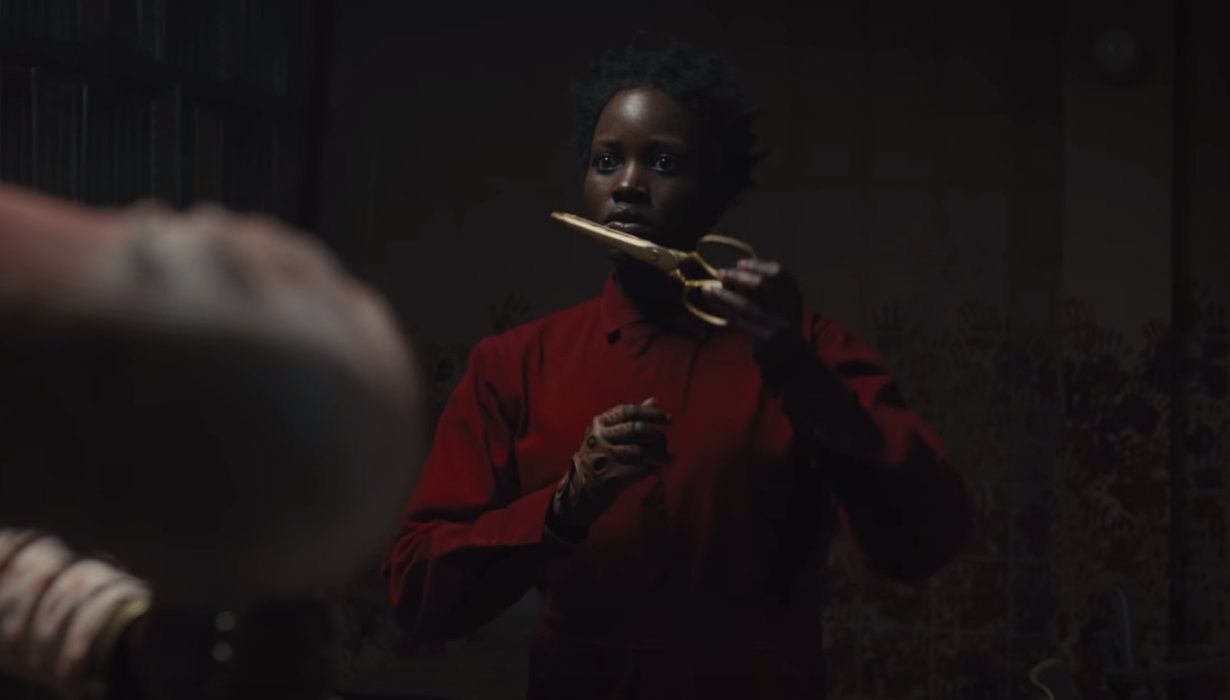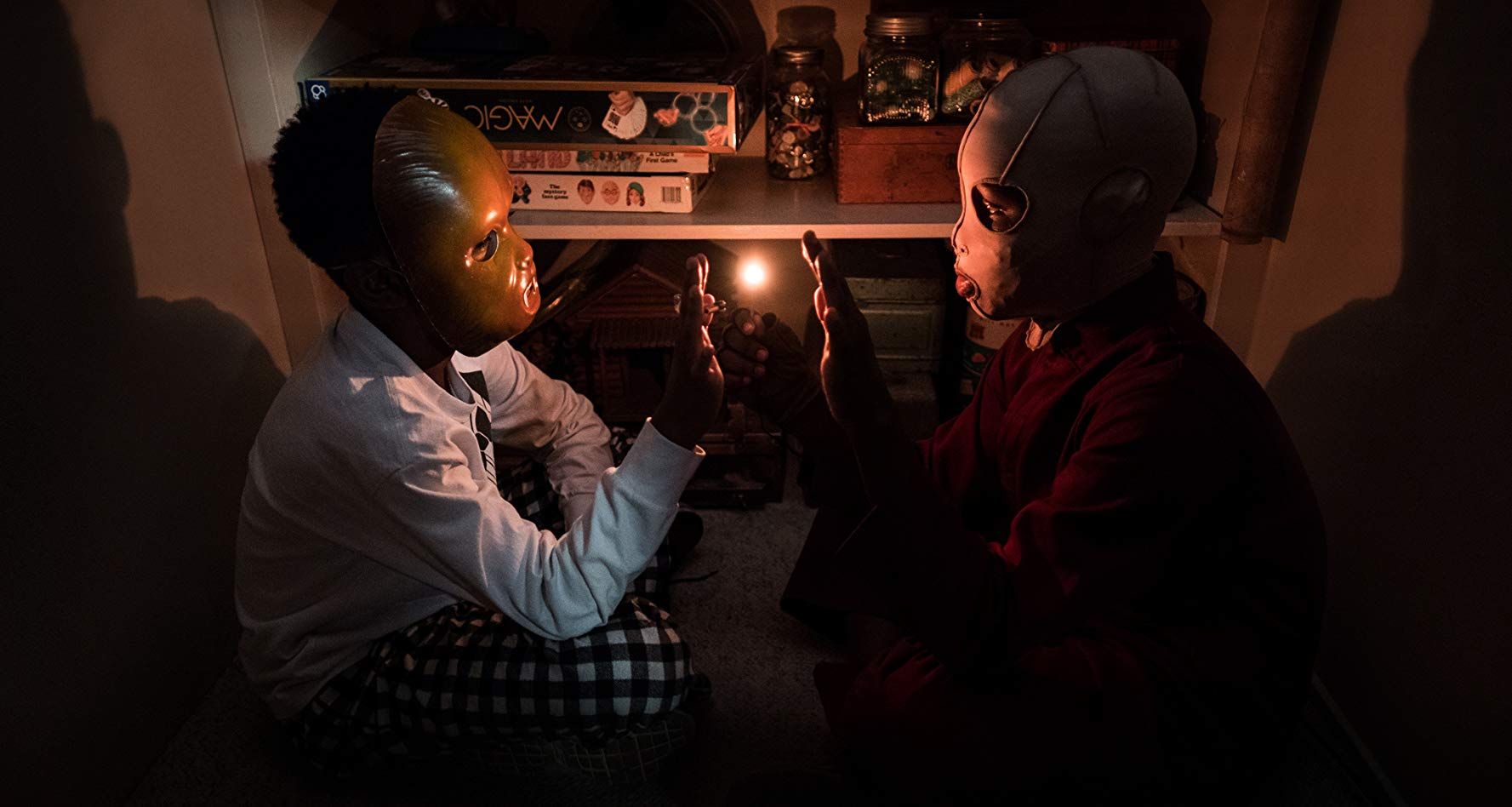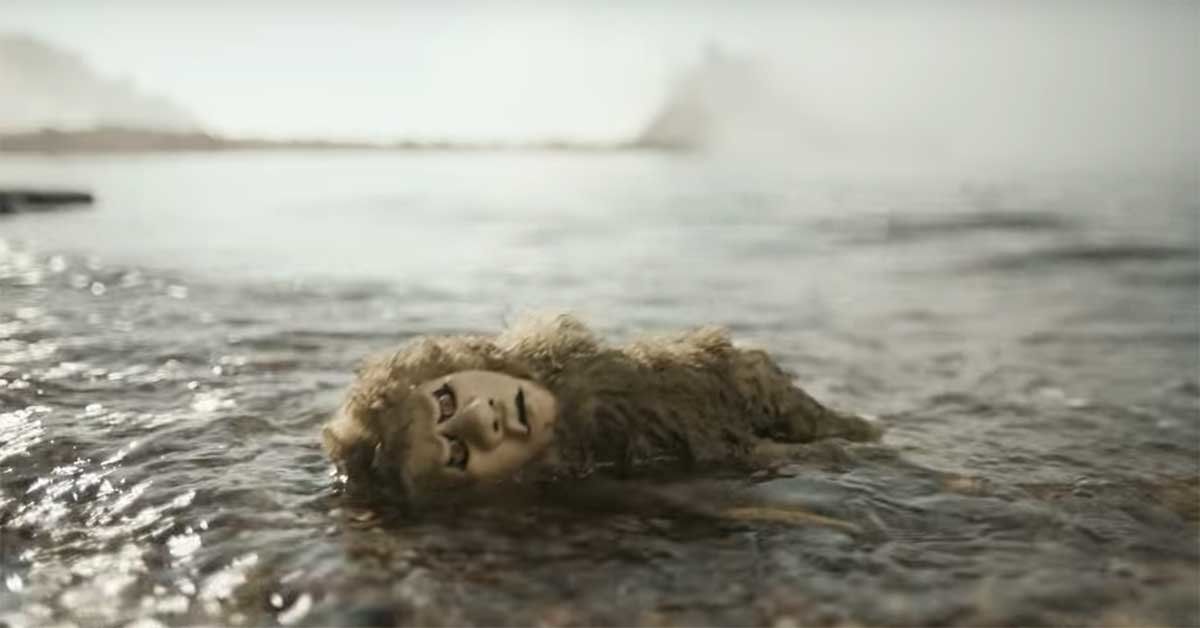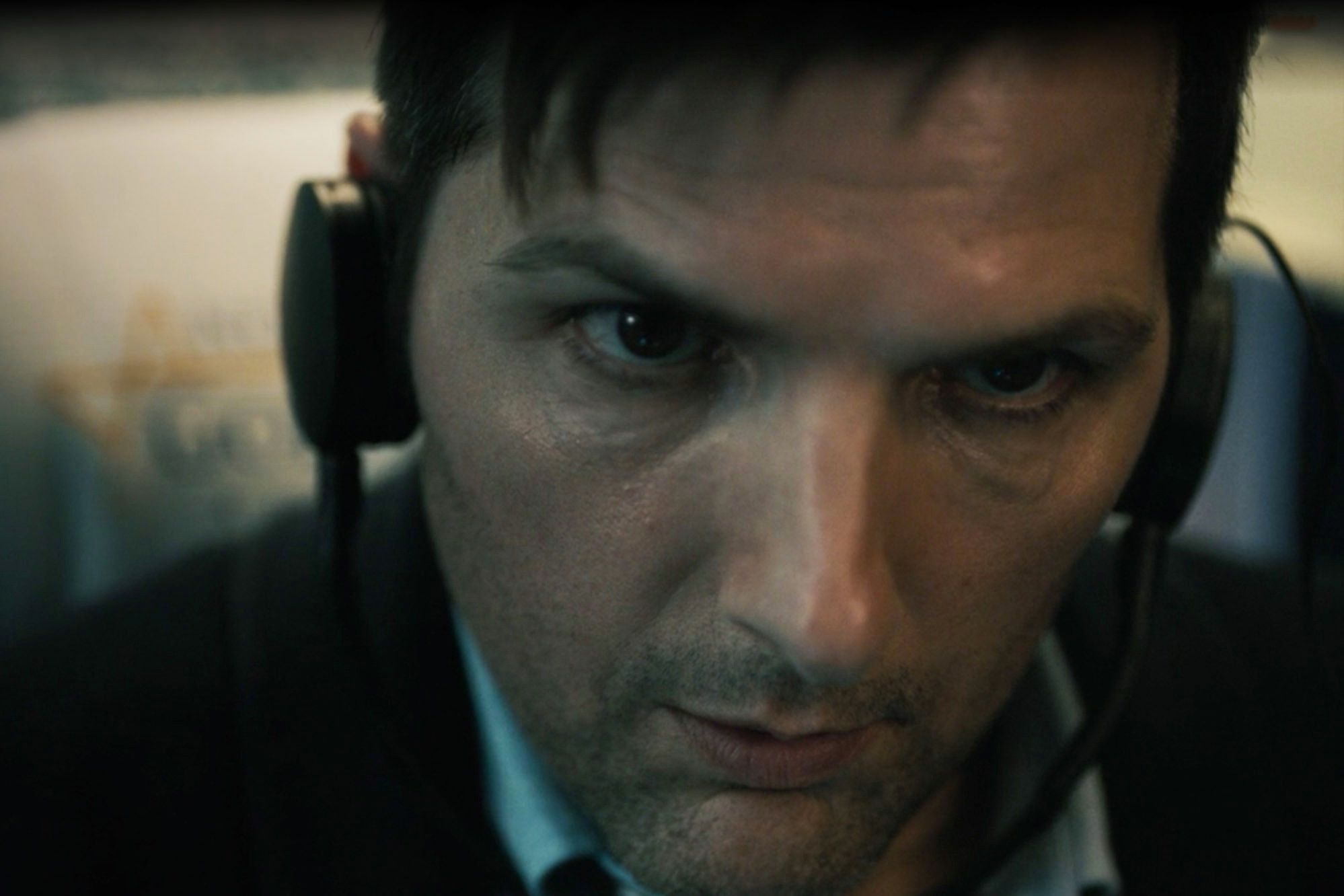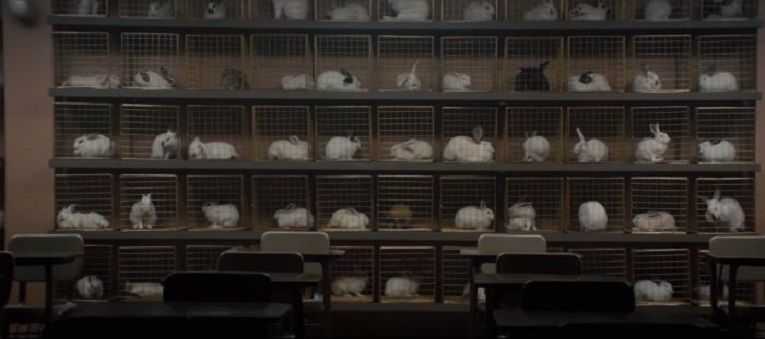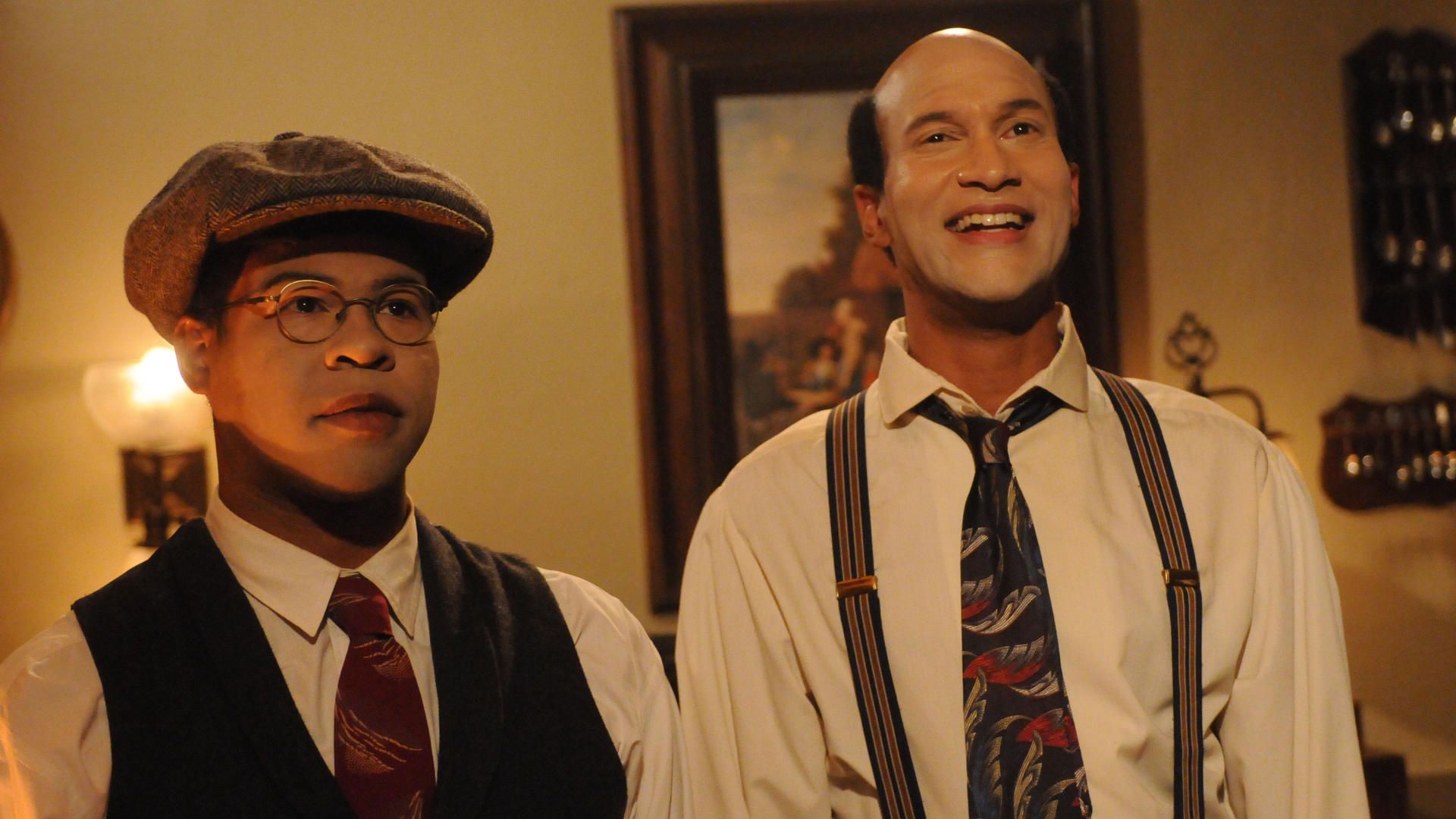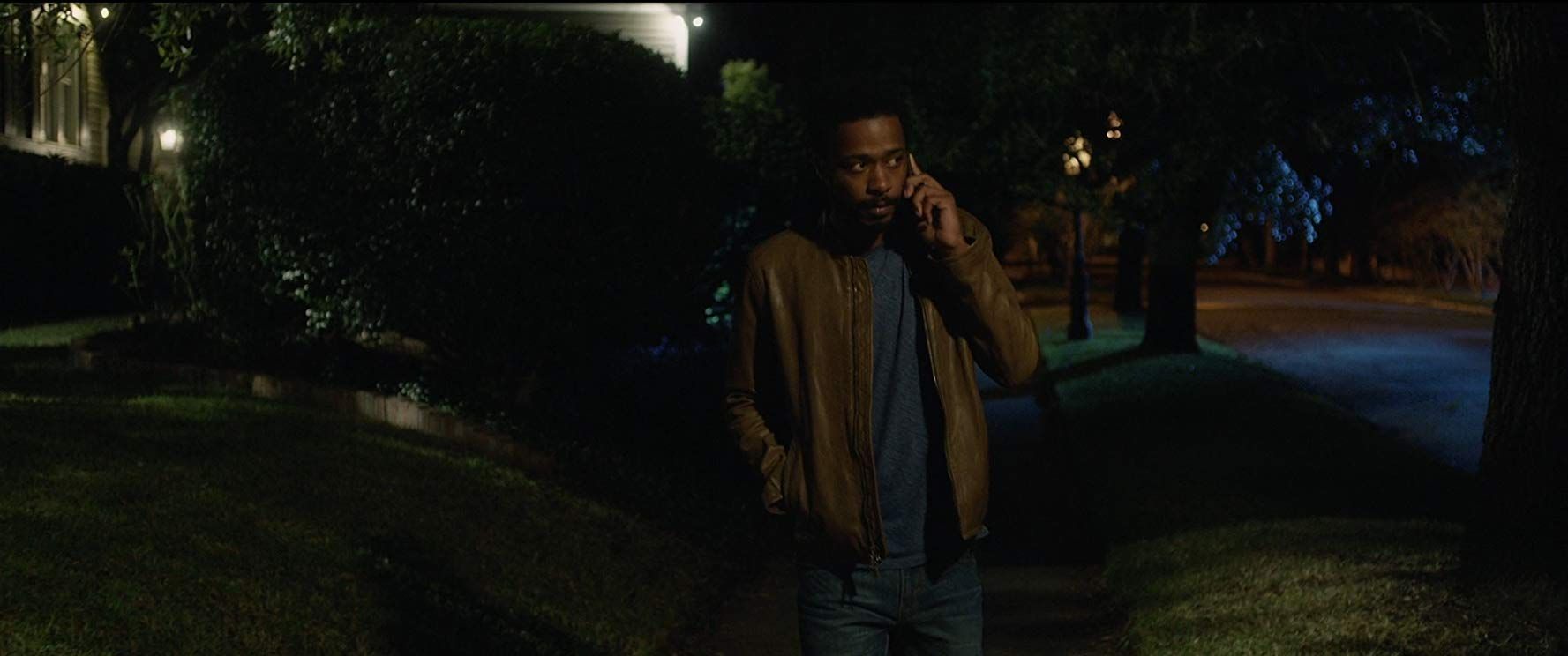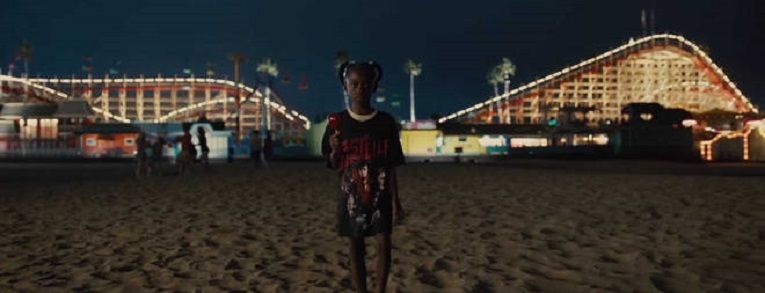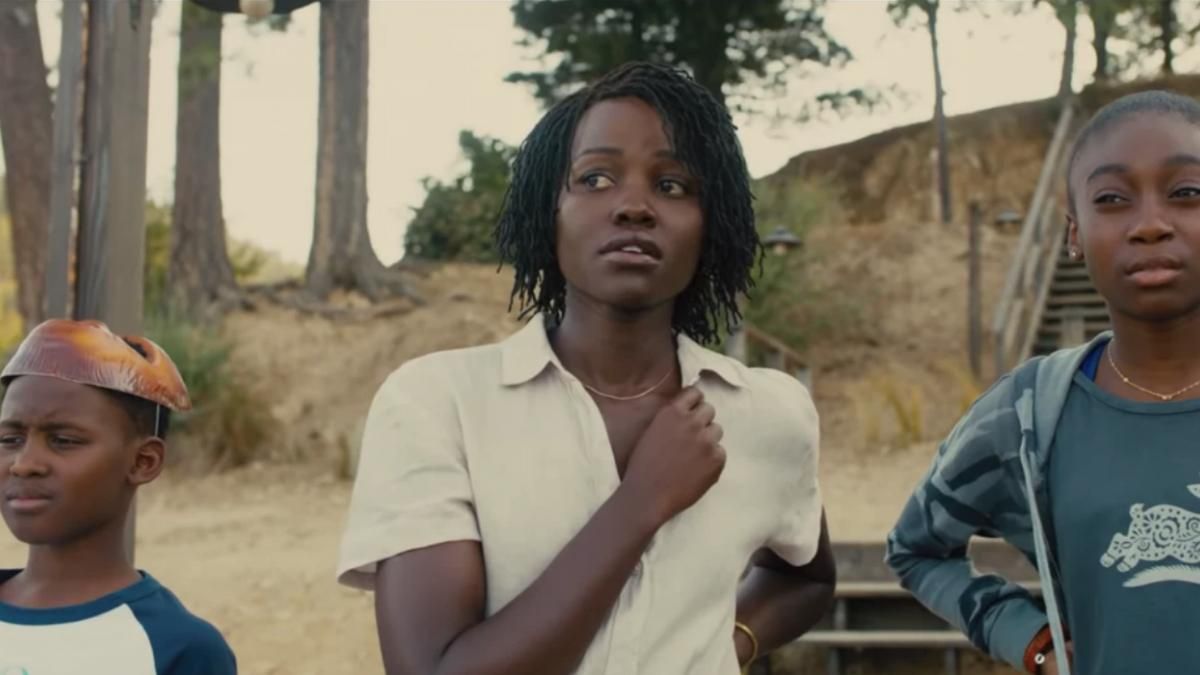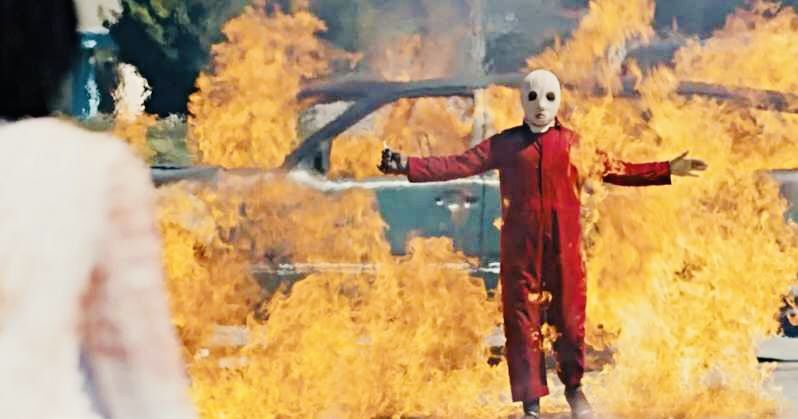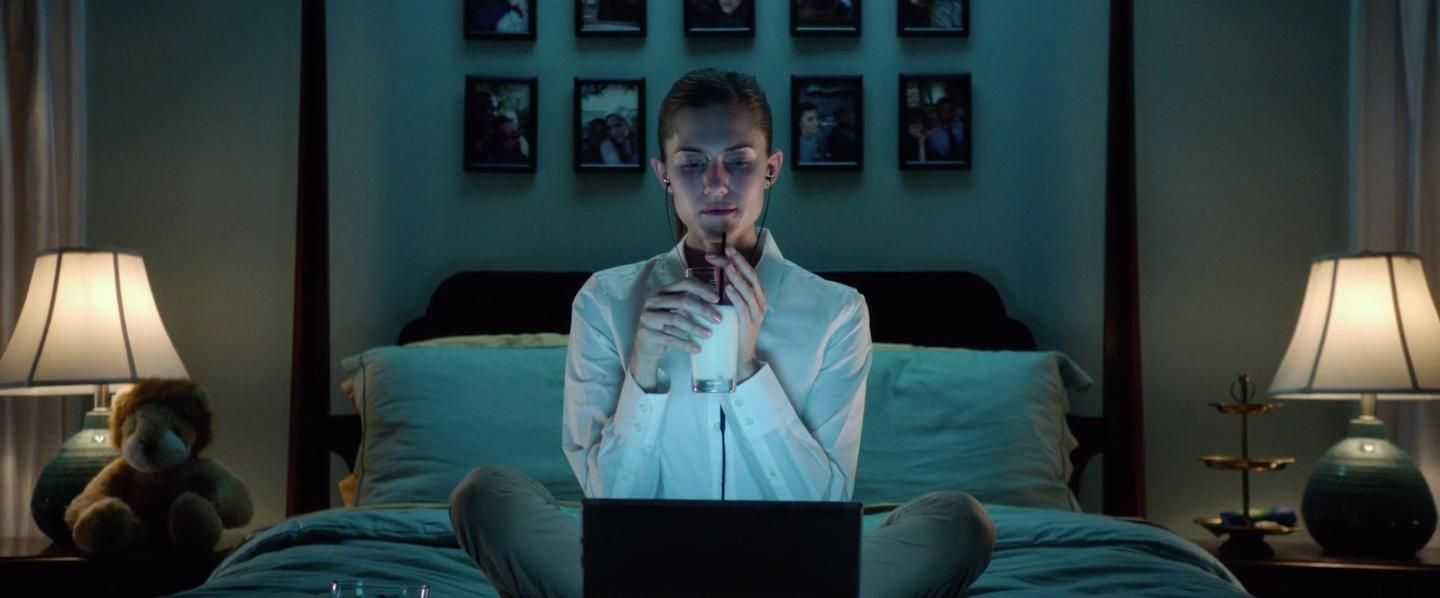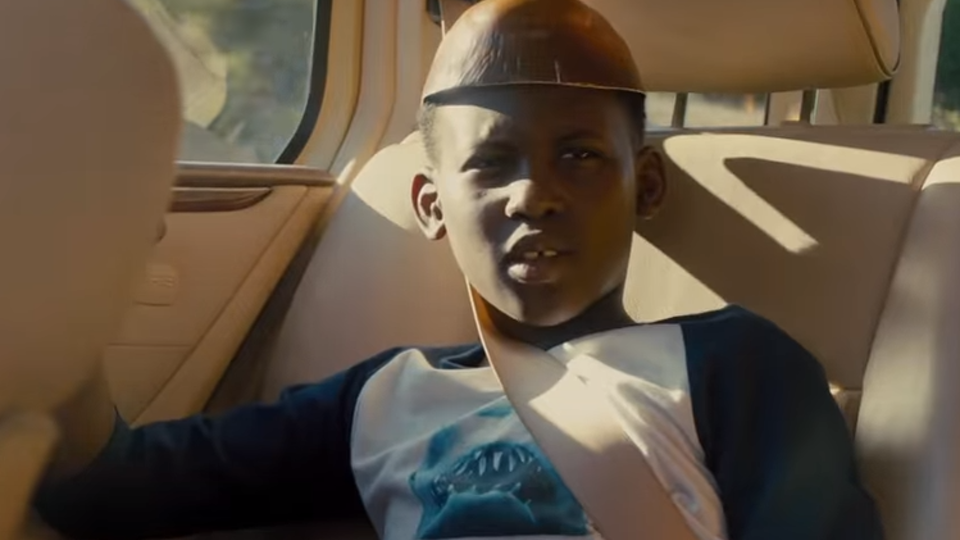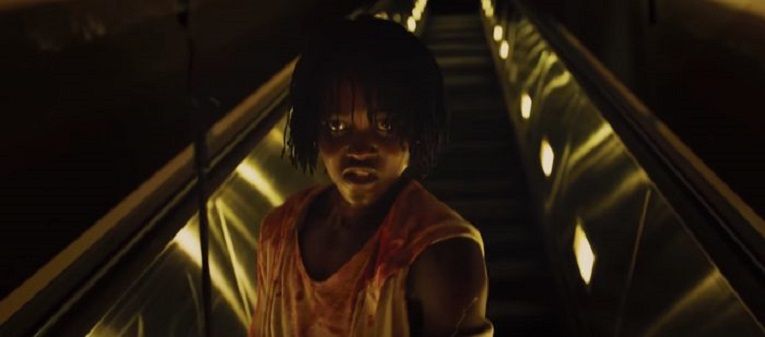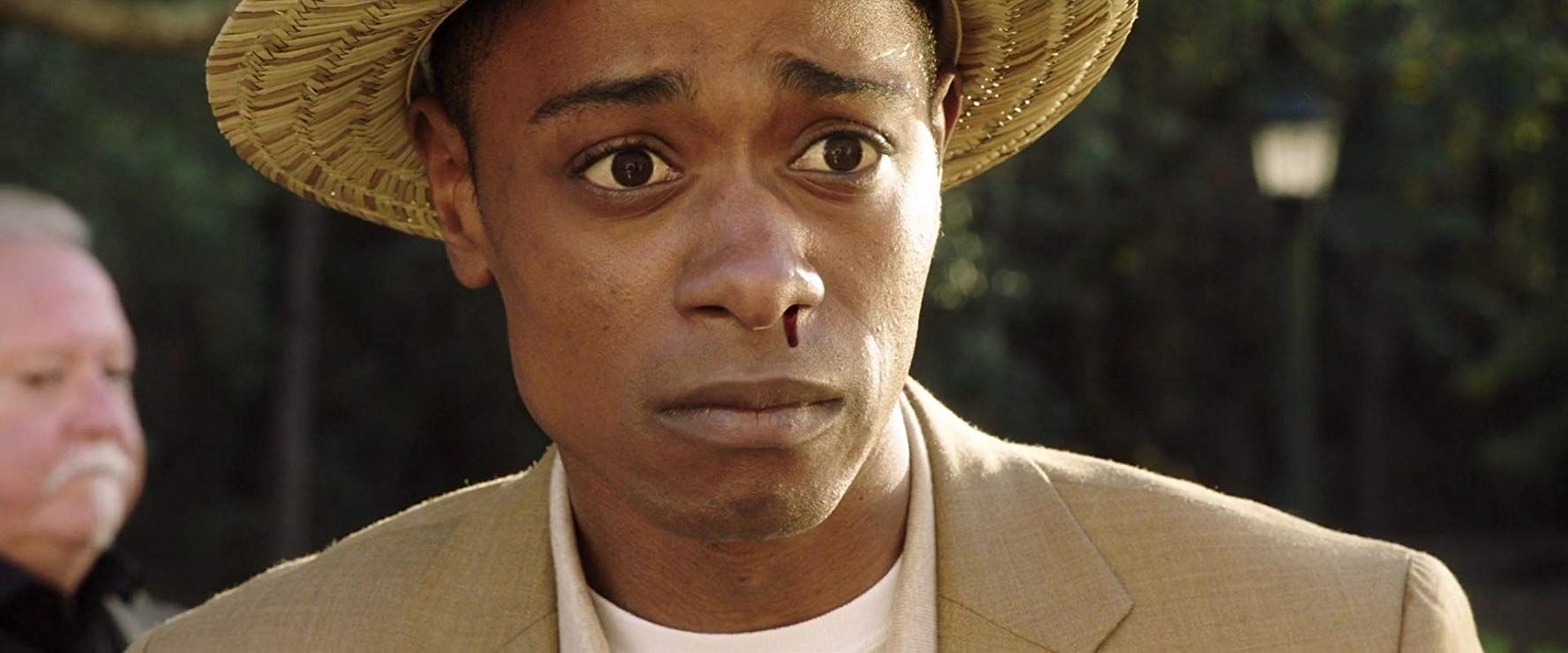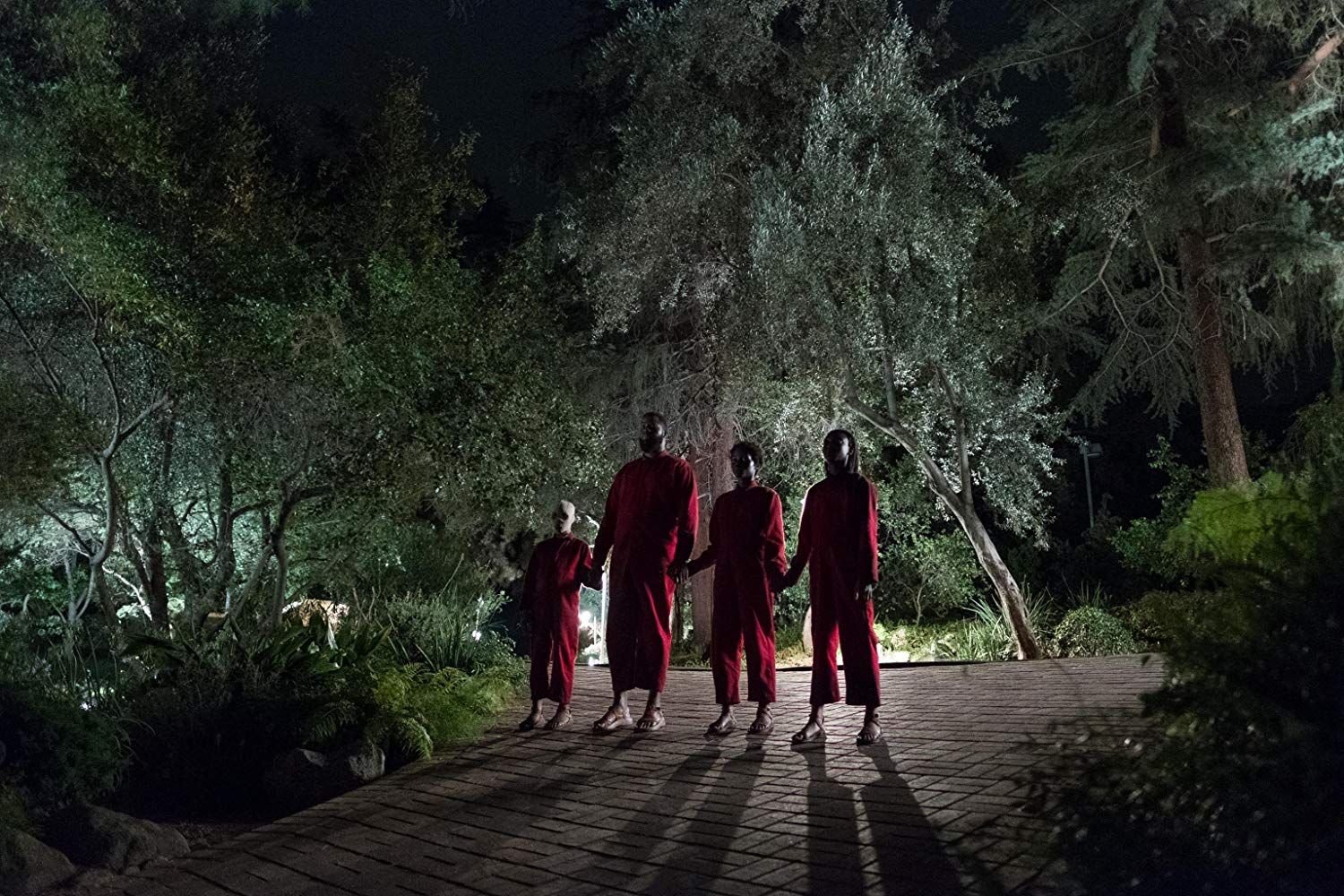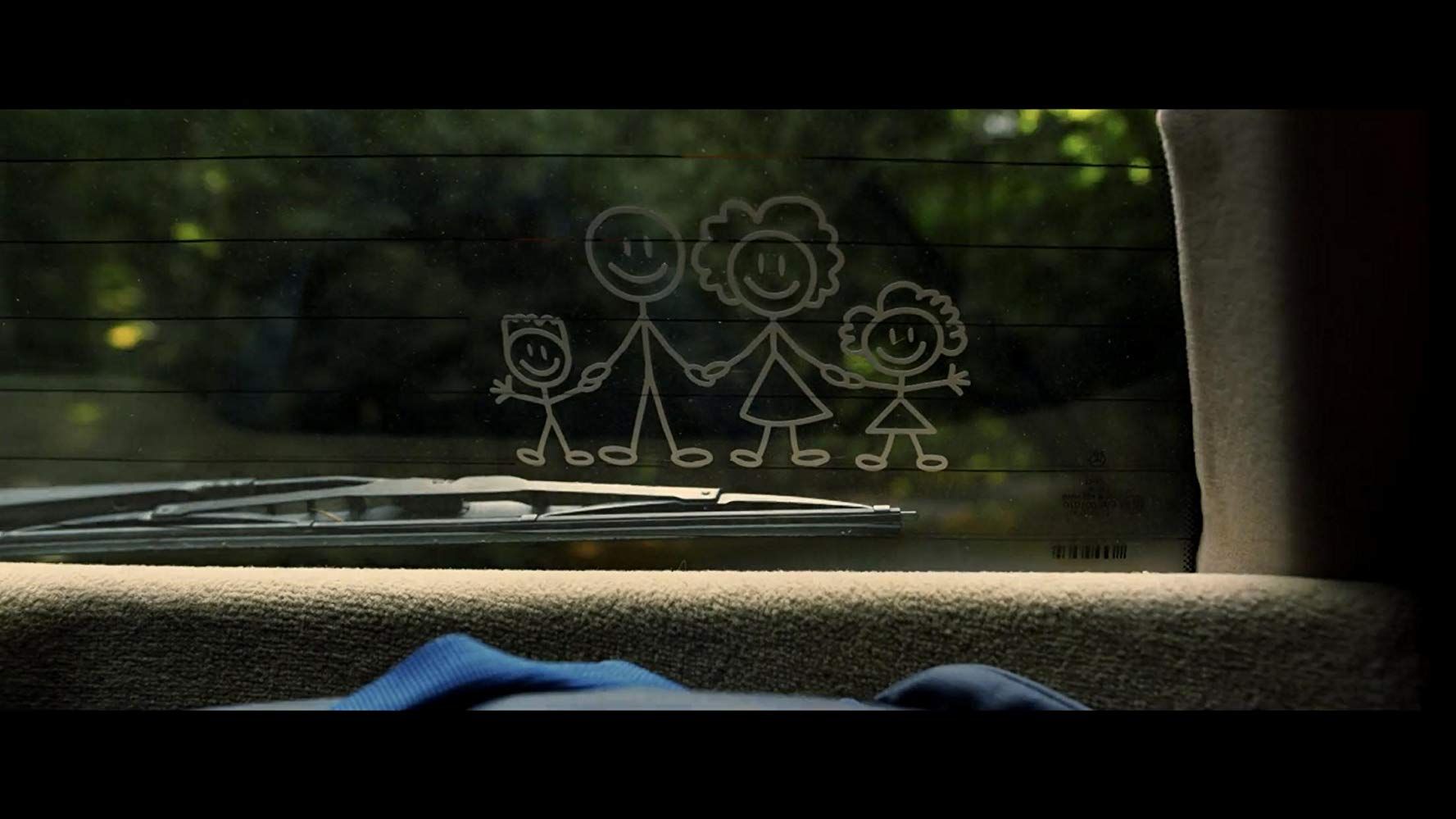However, there are many cryptic symbols and hidden messages that are easy to miss throughout all of Peele’s works, including Key & Peele sketches and his most recent project The Twilight Zone. Warning: this article contains major spoilers.
Us - "Craw Daddy" Boat
The name of the Wilson's new boat is a reference to crawdads (turned into a loveable dad-pun), which are also known as crayfish. There's a species of crayfish that researchers found can clone itself indefinitely due to a mutation.
This is very subtle foreshadowing, hinting at the nature of the "tethered" being clones. Given Peele’s affinity not only for horror and comedy, but for science fiction, it’s likely this is an intentional, nerdy wink.
Key & Peele - Playing a Thug
One of Peele’s favorite subjects to examine is that of identity, which becomes the source of humor in the skit, “Playing a Thug.” Two actors are on a film set, playing a pair of hardened, gun wielding men, acting out a vaguely stereotypical scene about “street life” that Hollywood seems fond of. The white director talks to his actor, praising the upper-crust British man for seeming like a real, hardened criminal, while berating the other actor for not being able to sell “being born and raised on the streets of Brooklyn,” (which, the actor replies, he actually was).
This could be a sly wink towards The Wire, which both cast British actor Idris Elba to play a criminal, as well as American actors who grew up in the same circumstances they were portraying. Peele has himself used British actors to portray Americans (Daniel Kaluuya as the protagonist in Get Out) so it’s unlikely he’s saying British actors can’t understand or portray American society. However, he’s definitely playing with the idea of “realness,” and how Hollywood sells authenticity.
The Twilight Zone - The Missing Apostrophe
In “The Comedian,” Kumail Nanjiani’s character, Samir, is in fact a comedian. Rather than his audience giving itself up to him, he gives himself up to the audience, allowing them to, in effect, devour his existence. The comedy club is called “Eddies,” and it’s joked that apostrophes are not allowed.
It’s a simple, forgettable detail, but in the context of the plot, it seems to be a metaphor for self-ownership: Eddies has no apostrophe, because he can’t own his own namesake, his own club. In the entertainment industry, you never fully own yourself, instead, your identity partially belongs to your audience (and if you’re not carefully, it can become theirs entirely).
Us - The "Vision Quest" Attraction
The "Native American Vision Quest" attraction is a retro walk-through ride at the boardwalk where Red & Adelaide (Lupita Nyong'o) meet. The mirrors are obvious symbolism for the reflective worlds of the tethered and surface-dwellers, but there’s a more subtle metaphor for the more observant movie-goer. In the “present day” time, when Adelaide is an adult, the ride’s name has changed to the "Merlin's Vision Quest.”
This represents our attempts to whitewash/erase from memory our historical appropriation/destruction of Native American culture. The "vision quest" may now be more politically correct on the surface, but when you venture inside the ride, it is identical to the old, less culturally sensitive version.
The Twilight Zone - Tracy Morgan Vapes
Also starring in “The Comedian,” Tracy Morgan’s character is ominous… and in true Twilight Zone fashion, there are some cues that direct us to infer he is the devil incarnate. One tip is that anyone who is too charming in the Twilight Zone dimension is bound to be satan. Tracy Morgan, whose middle name is charm (it’s actually Jamel but who’s counting) plays J.C Wheeler, whose name should already set up a bunch of alarm bells. Is he J.C, Jesus Christ, or a wheeler-and-a-dealer, a demon in the guise of someone holy?
Morgan’s character becomes increasingly sinister as the plot progresses. He vapes backstage as he gives Samir advice. First of all, we love a good vape on camera, but it’s also a symbol of J.C Wheeler’s devilry: he emerges from the smoke, like a still crispy-Lucifer. This is also a nod to the original Twilight Zone episode “Escape Clause,” in which a devil convinces a man to sign his soul over to him. He puffs smoke from a fat cigar, rather than vaping, but what can you expect from 1959?
Us - Police/Handcuffs
The theme of using handcuffs and the police to try and gain the upper hand runs throughout the film. In a flashback, we find out that the protagonist, Adelaide, is a clone who, as a child, strangled her surface-version and dragged her underground. She uses handcuffs to “tether” the original Adelaide to this underground, impoverished world, while she is able to scramble up to the middle class.
When "Red" emerges and seeks vengeance, the first thing Adelaide attempts to do is call the police (to no avail). Red then uses handcuffs to immobilize Adelaide, just as what had been done to her as a child. Finally, Adelaide deals the killing blow to Red, strangling her to death with her own handcuffs. This back-and-forth use of handcuffs is symbolic of the cycle of incarceration being used as a weapon, where those higher on the economic ladder use it to suppress others. But, as the film points out, this method of class warfare is ultimately at everyone's expense.
Key & Peele - Magical Negro Fight
This scene in Key & Peele ridicules the old cliché of the “magical negro,” the trope that a mystical, old black man can help the white protagonist with his problems. One of the most notable references within the skit: the animated bluebird that shows up on one of the mens’ shoulders is an allusion Disney’s Song of the South, a movie infamous for its clumsy, racist treatment of its black actors.
It features an old, singing black man surrounded by animated birds, whose sole purpose seems to be to help the white protagonists. The Key & Peele sketch mock this notion ruthlessly, with a fight over who gets to help the white protagonist.
Us - Character Weapons
Nothing in Us is done without intention. The weapons the Wilsons use to fight their clones are highly significant symbols of wealth: Gabe (Winston Duke) uses his boat motor on his double, Zora (Shahadi Wright Joseph) uses a golf club, and Jason (Evan Alex) uses a decorative geode. Peele has his characters literally beat people over the head with these symbols, a visceral representation of how wealth can be violently leveraged against the poor.
The notable exception is Adelaide, who uses a humble fire poker to attack her clone - she's the exception, as she actually came from the "underground" (i.e., poverty). A fire poker is used to stoke a fire, which she (unwittingly) and her counterpart (wittingly) did, through sparking a clone-revolution.
Us - The Glass Floor
During the initial conflict of the tethered family breaking into the Wilson’s home, Red pushes Adelaide's head into a glass table, cracking the surface. This is significant in a few ways: it's Adelaide's carefully groomed identity (reflection) cracking, as we find out by the end of the film, her life is a sham: she isn't the "real" Adelaide.
This seems to be a commentary on how those who come from poverty always will feel the threat of impostor syndrome, or that their old life will catch up to them. It's also a playful twist on the "glass ceiling." Adelaide/Red is breaking the "glass floor," forcing the middle-class to come face to face with the under-class.
The Twilight Zone - The Photograph
Peele is a man who loves his film references. After Samir meets his tragic end in “The Comedian,” he disappears from the earth - but not entirely. He shows up on large, photographic mural, depicting a multitude of people in black-and-white. Not only does this hint that he shares his fate with many other ambitious performers, but it’s a wink at the ending of The Shining.
Jack Torrance turned into a Jack-cicle in the end, but he magically appears in a vintage black-and-white photo of the old wealthy visitors who once inhabited the cursed hotel. Both Samir and Jack Torrance allowed their identities to become gobbled up: Samir, by the unforgiving culture of the entertainment industry, and Jack to the toxicity of colonialist, privileged white men. Or maybe ghosts, it could have been ghosts.
Get Out - Tea, Sugar, and Slavery
A teaspoon clinking against the teacup will never feel innocent again ever since Get Out turned it into a horror device. Catherine Keener’s creepy psychologist character uses the clinking of the teaspoon as a method of mind-control conditioning on the protagonist, Chris (Daniel Kaluuya), forcing him to become trapped in his subconscious. This imagery is so integral to the film that it has become a logo for Monkeypaw Productions, Peele’s production company.
Tea is not only a symbol of wealth and high-society, but historically, it is inextricably tied to the slave trade. Tea, and the sugar stirred in with that horrible little spoon, were the two major imports that helped fuel the slave trade. Once sugar became the most popular accompaniment with tea, it created a huge demand for slave labor in the West Indies, and helped finance the expansion of the slave trade. The major theme of Get Out, about white culture using and abusing black bodies, is ultimately rooted in the horrific history of chattel slavery.
Get Out - Quit Smoking
Catherine Keener once again takes the prize for being a terrifying villain. She offers to hypnotise Chris to allow him to “quit smoking,” and though it is framed as “helping” him, in truth it is merely a ploy to use the creepy “sunken place” to turn Chris into a compliant body-donor.
The fact that Chris’s “addiction problem” is used as an excuse to control him can’t be mere coincidence with the fact that drug laws, often proposed as a way to “help” black communities with addiction, are arguably a tool of oppression to keep black people “in line,” controlled, and subjugated.
Us - Backup Generator
In the beginning of the film, Gabe Wilson bemoans the fact that their wealthier friends, Josh (Tim Heidecker) & Kitty (Elizabeth Moss) Tyler, have cooler stuff (better boat, car, a backup generator), but as we find out, these items prove useless in surviving the clone-uprising. Josh & Kitty's backup generator keeps the power on in the house after the clones cut the power, but it's clear after they're all summarily slaughtered that it really didn't make much of a difference.
Similarly, the flare gun that Gabe fires at clone-Josh, the flare gun that real-Josh bragged about as a necessity, was comically useless in the fight. Their version of “Alexa,” called “Ophelia,” is similarly void of utility: as the dying Kitty gurgles out, “Call the Police,” Ophelia plays “F**k the Police,” both a comically accurate joke about the frustration of voice activated devices, and commentary on how pointless these luxury items often are in actually helping people.
Us - 11:11
11:11 first shows up in the opening scene, where child Adelaide spots it on the cardboard sign of a vagrant, referencing the scripture of Jeremiah. It comes up again when adult Adelaide’s husband points out the score for the game he’s watching: 11:11. Adelaide’s son also points out the time, 11:11. Finally, we see the re-telling of the opening scene, with both tethered Adelaide and Adelaide: in the tunnels, 11:11 is carved into the forehead of the vagrant. The mirror imagery of 11:11 is hard to miss, and those who study the bible also know the scripture: “Therefore thus saith the Lord, Behold, I will bring evil upon them, which they shall not be able to escape; and though they shall cry unto me, I will not hearken unto them.”
This could both mean that the clone-uprising is the wrath of god upon an unjust society, but it could also mean that the “surface-dwellers” are acting as God, bringing evil upon those below them, ignoring their suffering. Yet another significance to 11:11 is those who are superstitious: “It’s 11:11, make a wish,” is an old saying, the idea that it is a magical hour, or one of mystical significance. The biblical and occult interpretations of 11:11 is another mirror, two opposing factions who find different significance in numbers.
The Twilight Zone - The Mural in Eddies Comedy Club
There’s another mural that’s harder to catch—one that features the photos of audience members. Their faces have been warped and distorted, looking a bit like the characters faces in the classic Twilight Zone episodes, “The Masks” and, “Eye of the Beholder.”
Not only is this a nod to the original series, but it’s also significant: these old Twilight Zone episodes are both about people’s personal identities; in “The Masks,” the characters’ inner ugliness becomes a permanent fixture upon their faces. In “Eye of the Beholder,” the main character’s inner beauty is not seen by those around her (with a twist ending revealing that outer beauty itself is relative).
The Twilight Zone - That Twist Wasn’t A Twist
In a twist ending, Samir decides to use his spooky comedian power (of erasing anyone from existence that he mocks in his standup routine) to erase himself from existence. He’s given his audience everything but his own personhood, and in atonement for becoming a monster, he self-erases by making the routine about him.
However, this twist is anything but. It wasn’t the painful appearance of his girlfriend that shocked Samir into a moral reckoning. Samir, from the start of his final comedy set, had already decided to delete himself. This is revealed when he jokes about his parents: “F**k my parents,” he yells, ensuring that his parents would be deleted, which would also delete himself. But even before then, Samir had already lost his identity as soon as he started erasing people for personal benefit. The ending, of him literally disappearing, is nothing but darkening the period at the end of the sentence.
Key & Peele - Hall of Mirrors
The Key & Peele skit “Hall of Mirrors,” features the mirror-filled-room showdown trope, as seen in many climactic scenes in films such as Enter the Dragon and, James Bond: The Man With The Golden Gun.
But the originator of the trope was the Orson Welles’ 1947 film The Lady from Shanghai, in which a final shootout and emotional confrontation occurs in a hall of mirrors. This (at the time) novel cinematic imagery became the inspiration for countless films, and was also alluded to in Peele’s Us.
Us - Clone Kitty Cutting Herself
One of the creepier moments in the film is when the red-jumpsuit tethered version of Kitty cuts herself along her jawline with her own scissors. It’s an unsettling form of self harm, and seemingly out of the blue, as she had previously been occupying herself with applying makeup and primping herself in the mirror.
This harkens back to what original-Kitty mentioned earlier in the film: she’d gotten a facelift, which involves cutting the skin around the forehead and jawline, and pulling the skin taut to reduce wrinkles. She’s pantomiming this medical procedure that her wealthy double got done, which, when outside the context of a clandestine doctor’s office, is revealed to be gruesome.
Us - Clones Joining Hands
In the end of the film, the red-jumpsuit wearing clones form a human line, hand-in-hand, as a recreation of the “Hands Across America” charity/publicity stunt. The real thing, meant to combat “hunger,” fell far short of its fundraising goals, and could be argued to have done actually very little in terms of combating the issue of poverty in the U.S.
In the movie, this human chain forms a red line, a significant term when discussing race and poverty in America. “Red lining” was the practice of financial institutions of segregating poor, often black neighborhoods, refusing to do business or accept loans from areas beyond the “red line.” This ties into the theme of the ignored, underclass of the tethered in the movie.
Us - Scissors
The primary meaning of the scissors, being a device to sever a connection, is very explicit. However there’s another interesting aspects to scissors, in that they themselves depend on mirrored forces in order to function.
The two blades of scissors work in equal and opposite motion, like the tethered and those on the surface. The reflective movements of both sides, like the scissors, are a destructive force: capable of slicing through the social fabric.
Us - Jason’s Masks
Jason’s wolfman mask has a few meanings: the first being a nod to the frightening hockey-mask of his possible namesake, Jason Voorhees from Friday the 13th. Jordan Peele, a movie nerd, seems to love tossing in homages to his film inspirations. The mask also serves as a metaphor to hiding from your identity. The tethered version of Jason also wears, a mask, but this one covers his literal scars: burn marks, likely from playing with a lighter, mirroring the actions of surface-Jason as he plays with his magic-lighter.
This mask covering his burns is not just to cover them from view, but a reference to real burn-masks that are meant to help heal the damaged tissue. Both versions of Jason’s masks, the wolfman and the burn mask, not only obscure, but are meant to heal the wounds of his identity, both physical and psychological. Significantly, Jason dons the wolfman mask at the end of the film, after the trauma of learning his mother may not be what she seems.
The Twilight Zone - The Doll
“Nightmare at 30,000 Feet” is the second episode of the Twilight Zone revival, featuring Adam Scott reprising William Shatner’s role as a paranoid airplane passenger convinced the airplane on which he is flying is doomed.
The cause of the distress is different than in the original, which features a giant teddy-bear-like gremlin tampering with the wing. This monster is winked at with the appearance of a stuffed animal resembling the airplane gremlin from the 1963 version.
The Twilight Zone - Dan Carlin’s Cameo
The eerie, seemingly omniscient podcast that becomes the focus of terror in “Nightmare at 30,00 Feet” is narrated by none other than Dan Carlin, host of the podcast Hardcore History.
Not only is his voice iconic of podcasting, it’s also an interesting choice given the theme of unalterable fate: Dan Carlin narrates not a future that can be changed or averted, but a past that has already been crystalized.
Us - Rabbits
One question we’re left with after watching Us is, “why rabbits?” Like most things in the film, this choice was not by accident. Rabbits were one of the first animals ever cloned, tying into the lab-experiment clone plot of the film. There’s also a duality of rabbits: They can be meat, as they are to the tethered who eat them, or a pet, as they are to Jason.
They’re a symbol of two opposite circumstances: you can be meat, you can be a pet, but either way, you’re still captive. Perhaps this is meant to represent the tethered and the people on the surface. While those on the surface have it far better, they, like a pet rabbit, are still not completely free.
Key & Peele - Das Negros
The Key & Peele skit “Das Negros” is a nod to many WWII films, including Das Boot, the inspiration for the title. The tense scene of a Nazi trying to find hidden Jews or spies is a reference to Schindler’s List, and the Nazi’s sinister, faux-friendly mannerisms are a reference to the character Hans Landa (portrayed by Christopher Waltz) in Inglorious Basterds.
The Nazi is looking for two “negroes” on the run (Keegan-Michael Key & Peele, wearing very conspicuous white makeup). They try to improvise their way out of the situation by saying their names are “Heinrich Leroy Heimmer,” and “Baron Helmut Schnitzelnazi."
Get Out - “Run Rabbit Run”
The rabbit symbolism in Us has an interesting connection to Peele’s previous horror film, Get Out. The song “Run Rabbit Run” is played in the opening scene, in which Andre (Lakeith Stanfield) is stalked and forcefully kidnapped. In the song, the lyrics warns the titular fleeing rabbit, “Don't give the farmer his fun, fun, fun/ He'll get by without his rabbit pie/ So run rabbit, run rabbit, run, run, run.”
This song, in context, is about how for some, life is about survival (the rabbit) and for others, it’s about fun (the farmer, who doesn’t need a rabbit pie, but wants one for the pleasure of hunting and eating it).
Us - Adelaide Eats A Strawberry
Adelaide sits with her family in their vacation home. While they eat fish and chips, she spends about ten minutes eating a single strawberry. The painstaking way she eats the strawberry is notable in a few ways: firstly, it’s very rabbit-like, and as we’ve mentioned above, rabbits symbolize the duality of privilege/poverty. It’s also foreshadowing: Adelaide as a child was one of the tethered.
She survived by eating raw rabbit meat. Not only would she relish the sweet taste of strawberry (a privilege), she may be avoiding meat, which she associates with brutality and pain. It also echoes the red candied apple that the real Adelaide (now “Red”) ate at the beginning: Red took the candied apple for granted, letting it drop into the sand uneaten, something she likely regretted during her forced captivity in the underground tunnels. Now, replacement-Adelaide gets to savor the sweet fruits of the surface.
Us - Adelaide’s White Clothing
For the majority of the film, Adelaide wears white, flowing loungewear. White clothing (such as wedding dresses) is often a symbol of purity and privilege: who else can keep white clothing clean and pristine than someone who has the time to wash it? She’s also literally “white-washing” herself: erasing her history as an underprivileged minority.
As the film progresses, her white clothing becomes increasingly soiled with blood, illustrating her pure, constructed identity breaking down. Her clothing turns red, the same color as the jumpsuits worn by the tethered: like a pair of scissors, they have come together as one, with destructive results.
Us - Pluto's Death
One of the most haunting scenes in the movie is that in which Pluto (Jason’s shadow-self) stands in front of a burning car, with a match and a line of gasoline flowing towards the Wilson’s. At first it seems like a straightforward trap, one meant to murder the Wilson family in via arson. Jason appears to figure this out, and learns he can control Pluto’s movements. He “forces” Pluto backwards, as he walks backwards himself. Pluto backs into the flames of the burning car behind him, as Adelaide looks on in horror.
But there’s a few hints this scene may have another interpretation: the car roiling in flames, and Pluto standing calmly in front of it, is a mirror-image of the real-life famous photo in which a Vietnamese monk set himself on fire, and sat calmly in front of a car as he burned to death (a protest of of South Vietnam’s persecution of Buddhists). This might imply a secret plot point: Pluto is the one controlling Jason, not the other way around. Pluto sacrifices himself, allowing himself to be engulfed in flames, in order for Jason to be captured by Red. The ambiguity over which version of events is true, and which version of Jason is controlling the other, is likely left intentionally vague.
Get Out - Cause of Death
Each member of the villainous Armitage family is dispatched in symbolic ways. The first to die is Jim Hudson (Stephen Root), the wealthy man who “bought” Chris’s body. He’s left on the surgical table to die, his own privilege of leveraging his money to get superior medical treatment ultimately his downfall. Then goes Dean Armitage (Bradley Whitford), the patriarch of the creepy family, impaled by his own trophy deer head. He hunts deer (just as he hunts humans) as trophies.
Then goes Missy Armitage, the unsettling psychiatrist/hypnotist. She’s stabbed with a letter opener. Her sins lie in her abuse of language & communication to “hypnotize” (indoctrinate) her victims. She’s killed with an implement that represents the duality of the written word: seemingly peaceful, but often a weapon. Then Jeremy Armitage (Caleb Landry Jones), the violently racist and bloodthirsty son, who is bludgeoned with a bocce ball (this is all a fun, deadly game to him, after all - it’s fitting he’s beaten over the head with his own expensive toys). Finally, Rose is shot by her “Grandpa”, and is left by Chris and his friend to die. She, who relied on her privilege to use love and affection as a weapon to lure in victims, is abandoned.
Us - Teaching Jason to Snap
Jason’s identity is hinted at to be a bit of a mystery. Is he the “original” Jason? Pluto, Jason’s shadow-self, Pluto is unable to talk: his face has been too badly burned, and without his ADHD treatment (a condition Jason is implied to have), he behaves erratically. Therefore it’s possible they were, at one point, switched, since Pluto is in no position to demonstrate himself to be the true “Jason.” What evidence is there of the switch? Jason has become more “weird,” according to the kids’ friends, and he’s used inappropriate language (the hilarious, “kiss my anus” line) in the car that his parents profess not to know where he acquired it.
He’s also, like Adelaide, hesitant to eat the fish: perhaps he too has been fed a diet of raw rabbit, and is askance about meat. He’s one of the most quiet characters, similar to the child-version of clone-Adelaide, who had to learn how to talk once she escaped to the surface. He also can’t figure out his lighter magic trick, something that Pluto seems frustrated with: perhaps Pluto mastered this trick years ago, when he was the one on the surface. Finally, Adelaide tries to teach Jason to snap his fingers in rhythm. Not only may this indicate he is a shadow, learning to pose as a surface-dweller, but it’s highly symbolic. Adelaide, once part of the underclass, tries to teach her son the same lessons she learned: how to stay in rhythm, how to fit in with the flow of “normal” society. Which version of Jason is real, then? Peele makes us wonder whether that’s a question that even matters.
Us - The Down Escalator
The surface world and “tunnel” world are connected through secret entrances, and the one Adelaide uses is significant: it’s down an escalator, into what appears to be an abandoned subway.
The escalator Adelaide uses only goes down. After all, the system is built such that it’s much harder to ascend up from poverty (the tunnels) than it is to slip down into it.
Get Out - “Get Out!”
Just as the title Us can take on multiple meanings, the titular phrase, “Get Out,” is not just a warning, but also a plea. The brain-transplant victims, when momentarily lifted out of the sunken place by camera flashes (another great instance of symbolism) yell at Chris, “Get Out!”
They could be warning him of the danger he’s in, but it could also be crying, “Get out of my head!” Not only does this interpretation makes sense in the literal plot’s context of white people’s brains invading the victims’ heads, but also metaphorically - internalized racism can be insidious and hard to escape, so the cry of “get out” could also be the frustration of trying to get cultural indoctrination of racism and racial roles out of one’s head.
Us - The Shadow Wilsons
Did we mention that this film is insanely detailed? Peele even snuck in some secrets that are revealed only if you know the etymology of the Wilson’s (and their tethered counterparts) names. Adelaide is French for nobility, a significant label given the struggle between Red and the protagonist over who gets to be the real “Adelaide,” claiming the title of nobility. Red, meanwhile, is quite the opposite of “nobility,” a slang for communists, or the proletariat underclass. Gabe Wilson’s name is more biblical, “Gabriel,” being Adelaide’s guardian angel, or as Red puts it, Adelaide’s “prince.” Red, meanwhile, must contend with the tethered version of Gabriel, “Abraham,” whom she describes as a “brute.” Biblically, Abraham is a man who is so devoted to God, he blindly accepts God’s order to kill his own son. This blind, violent obedience may be seen by some to be “brutish.”
Zora, the daughter’s name, means “dawn” in Slavic. She’s the light to her tethered counterpart, named “Umbra,” which means shadow, or even the dark part of a total eclipse. Their names are significant in that one cannot exist without the other. Jason’s name could be a reference to Jason Voorhees, but in Greek it originally meant “healer.” Pluto, Jason’s tethered, is the Roman version of the Greek god of death, “Hades.” This is yet another duality, death and healing, significant in Jason and Pluto’s stories of survival, injury, and ultimately, for one, destruction.
Us - Whack-a-mole
In both the beginning and in the flashback, we see Adelaide’s dad playing the “whack-a-mole” game on the boardwalk. It’s a bit of cheeky, on-the-nose metaphor here: the moles are the “tethered,” who are oppressed via those on the surface (whacked). On this level, it’s a pretty corny sort of foreshadowing, but there’s an added dimension that’s more sinister.
Just as it’s impossible to whack all the moles, it’s impossible to stop the clone uprising: you can kill a few, but more will always replace them. Depending on which side you fall on, this could be a message of hope or of terror.
Key & Peele - Les Mis
Key & Peele lambast the musical Les Mis, with an impressively shot parody, featuring dozens of songs and choreographies happening all at once. It not only teases the style of Les Mis, that features multiple simultaneous storylines and songs happening at once, but the lack of conversational realism in musicals in general.
After all, it must be extremely frustrating to live in a world where you’re constantly getting interrupted by someone singing over you, and several parallel plots (Key’s character gets increasingly frustrated that he can’t finish a single sentence).

